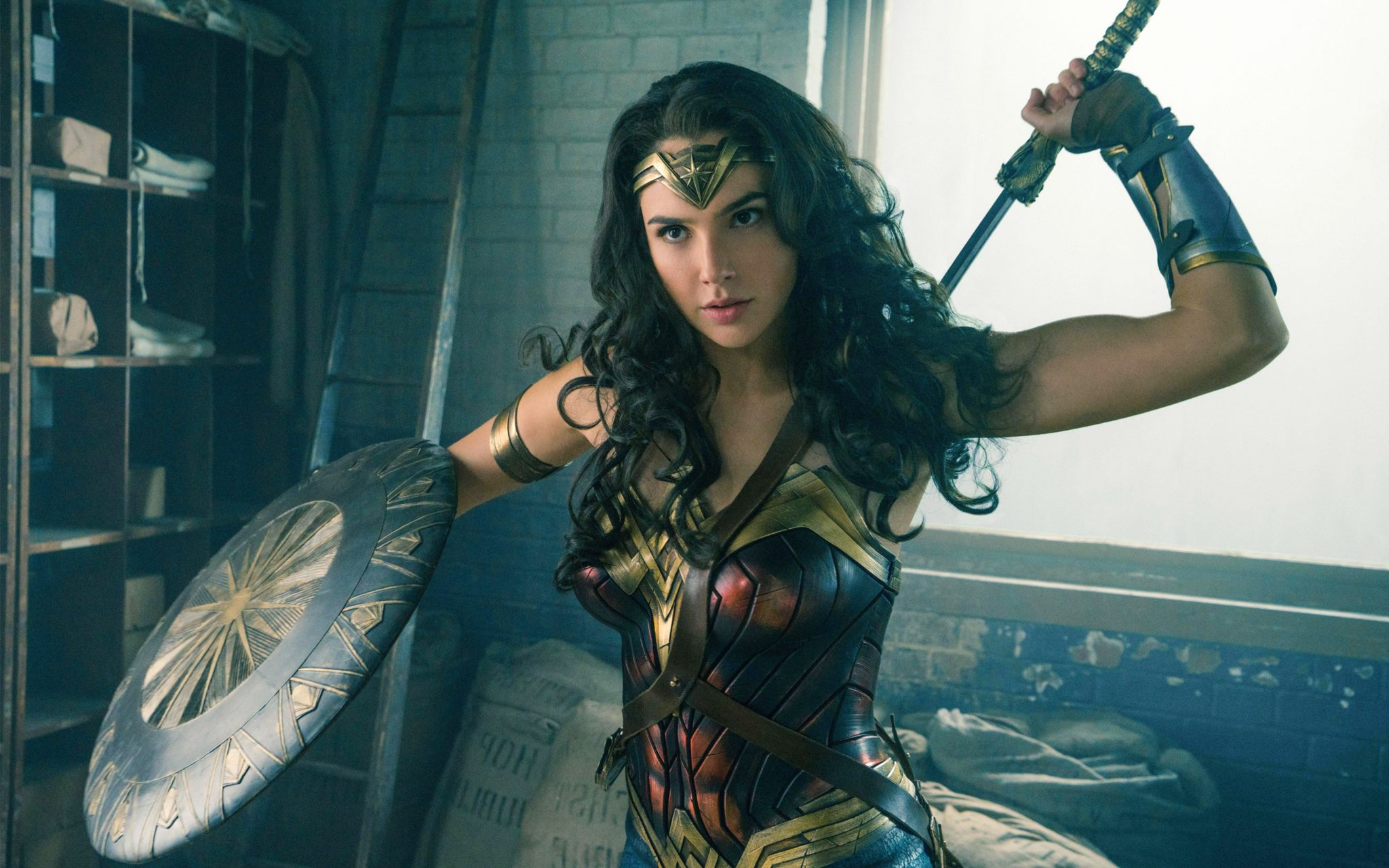Motion picture is a series of images recorded on film, tape, or digital video that appear to move when played through a film projector or a video entertainment system. Also known as movies, film, or cinema, motion pictures are one of the most popular forms of art and entertainment throughout the world. They are also a major source of information.
Every week, millions of people go to the movies. Many millions more watch movies on broadcast or cable television or on a videodisc, compact disc, or DVD player. Such digital devices as smartphones, tablets, and computers, as well as set-top digital recording devices, are among the most popular means of watching video and movies today. Most major film studios and television networks provide a way of viewing their shows and films digitally, either through digital video subscription services or through their own website or “on demand” video. Digital video distribution has changed the way many people see movies, because viewers can see video on multiple mobile devices as well as in their homes.
But movies are much more than just entertainment. The motion picture is a major art form, as are, for example, painting and creative writing. Painters express themselves by using paint, and writers, by using words. Filmmakers express their ideas through a motion-picture camera. By using the camera, lighting, and sound in different ways, the filmmaker can express different points of view. A filmmaker may film scenes in a desert, on a mountain, or in a large city. Filmmakers can also film scenes from different angles. Later, through a process called editing, they can select the angle that most effectively expresses a dramatic point. Through editing, filmmakers can also show events happening at the same time in different places.
Movies have become a gigantic industry. A typical feature-length film costs millions of dollars to make and requires the skills of hundreds of workers. Highly technical devices are needed to film and show movies. These include cameras, computers, sound-recording equipment, and projectors. In fact, motion pictures could not exist without many of the scientific and technological discoveries made since the late 1800’s. For this reason, movies have been called the art form of the 20th century.
We can enjoy many forms of art and entertainment by ourselves. We can enjoy reading a story or looking at a painting alone. But feature films are intended to be viewed in theaters. As a result, most filmmakers believe that we usually enjoy a motion picture the most when we watch it as part of a large audience. Although most people watch movies at home on television or a video entertainment system, films are usually intended to deliver their strongest impact on viewers in theaters.
The movies have a brief history, compared to such art forms as music and painting. Movies date back only to the late 1800’s. During the early 1900’s, filmmakers developed distinctive artistic theories and techniques. Motion pictures received little scholarly attention, however, until the 1960’s. Since then, thousands of books have been published about every aspect of filmmaking and film history. Many universities and colleges offer degrees in motion pictures, and many more offer film courses.
Movies have many uses in education, especially as teaching aids, in addition to their artistic and entertainment values. Teachers use such films in classes on geography, history, mathematics, and the physical and social sciences. Movies use slow motion, animation, and other special techniques to demonstrate processes that otherwise could not be seen or studied thoroughly. For example, a film can show the formation of crystals at high speed so a class can study this process.
Television stations and cable TV networks use motion pictures to inform as well as to entertain their viewers. TV stations frequently present documentaries. A documentary is a nonfiction movie that tries to present factual information through a particular point of view, and in a dramatic and entertaining way. Documentaries deal with a variety of subjects, such as environmental pollution and the history of presidential elections. Made-for-TV movies may deal with sensitive social issues within the framework of a regular entertainment movie.
Millions of people enjoy taking their own motion pictures with small motion-picture cameras; with video cameras, also known as camcorders; or with such digital devices as smartphones or digital video cameras. Home movies began to develop as a hobby during the 1920’s, following the invention of low-cost film that could be used in small cameras. The popularity of home movies has increased over the years with the improvement in cameras and projectors, the introduction of color and sound film, and the development of home video recordings that play back on computers and TV sets. Since the early 2000’s, digital devices have made home movies easier to make. Digital video can be transferred from device to device at no expense and without loss of quality and can easily be shared with a wide audience. Today, a range of video editing software is available for computers and mobile devices that gives more people than ever before the ability to make and distribute their own movies.
This article deals mainly with feature-length motion pictures made for exhibition in theaters and on DVD’s and television. For information on equipment used in making home movies, see the articles on Camcorder and Videotape recorder.
How motion pictures are made
Making a feature film calls for a special blend of art and business skills. A motion picture may take less than six months to more than three years to create. The film can cost less than $250,000 or more than $100 million. A big-budget film with special effects will employ several hundred people.
Although the film cast and crew may include hundreds of members, the people who perform two key functions remain at the center of the filmmaking process: the producers and the director. The producers are the chief business and legal managers of the film. Usually, one or more executive producers from the film company supervise the work of the producer of the specific motion picture. The producers exert great influence over the creative part of the film production. They choose the director, other key members of the creative team, and the script. Producers also supervise the budget.
The director is responsible for guiding the creative efforts of the screenwriters, cast, and crew. The director also plays a major role in shaping the budget. He or she influences the film’s shooting schedule and the equipment and personnel needs of the film. 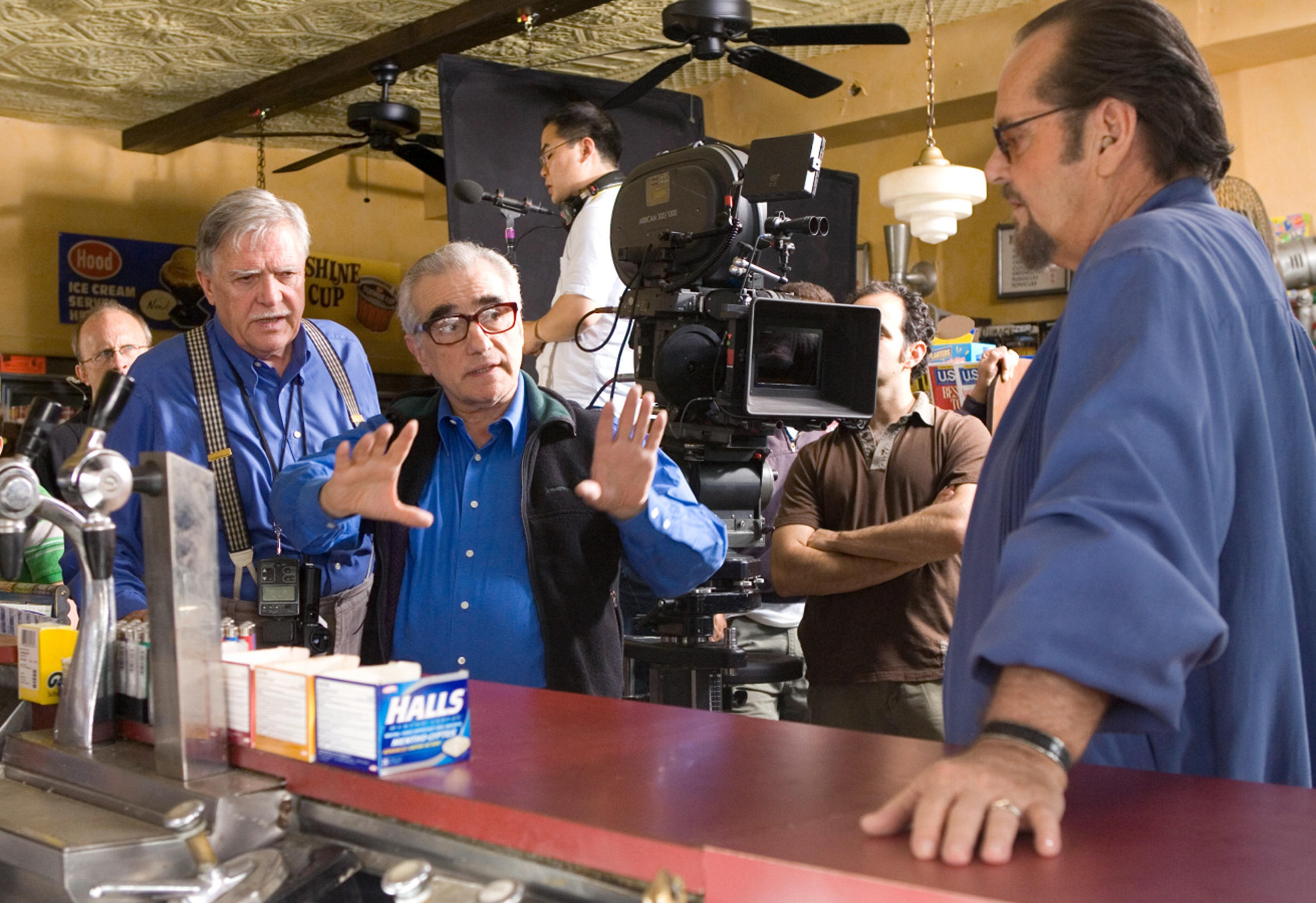
Each film presents a different set of problems for the producers and director. Some movies call for extensive traveling to distant locations. Others call for complicated special effects. Some need elaborate sets or an intimate and delicate acting style. Regardless of the particular challenges, each film will pass through a number of stages to reach its audience. These stages occasionally overlap, but they occur in the following order: (1) developing the story, (2) acquiring financing, (3) preproduction, (4) production, (5) post-production, and (6) distribution. This section describes the first five stages. The sixth stage—distribution—is discussed in the section The motion-picture industry.
Before the late 1940’s, almost all American motion pictures were produced by major studios in or near Hollywood, California. Today, most movies are made by independent film producers. The following section describes chiefly how a motion picture is made by an independent producer. The key personnel and many of the steps also apply to films made by the major studios. For information on the “studio era,” see the History section of this article.
Developing the story.
All feature films begin with an idea for a story. The idea can come from a newspaper article, from someone’s imagination, or from an existing book or play. The idea may be as complicated as a 30-page outline or as simple as a single sentence. No one person is responsible for finding an interesting source for a film story. Movie ideas come from screenwriters, producers, directors, actors, agents, and friends of the filmmaker.
After an interesting idea has been identified, the producer or director must find a screenwriter with the ability to turn that idea into a story that will work as a movie. Once commissioned, the screenwriter works closely with the project’s originator to develop the characters and to construct the story based on the original idea. The screenwriter’s job is to create the document that will serve as the blueprint for producing the film. This document is the screenplay. Some directors develop screenplays in a different manner. They use improvisation with their actors to explore initial ideas. This means that the actor makes up dialogue or action on the spot. Improvisation can contribute to the depth and individuality of a director’s filmmaking.
When looking for a property (story) to film, producers also review scripts prepared by screenwriters working on “spec” (short for speculation). This means that the screenwriter is speculating, or guessing, that his or her own idea will be sold to a producer or studio.
A writer working on spec sends an original script to an agent who will market it. The agent shows the script to producers and studio executives who may be interested in purchasing and producing it. If they are interested, they can purchase the script outright or—for a reduced fee—they can option it. By taking an option on a script, producers acquire the exclusive rights to the script for a limited time. During that time, they explore the possibility of producing the script. If they decide to produce it, they then buy the script. If they want more time to decide, they can renew the option. If the option is not renewed, the screenwriter keeps the option fee and has the right to sell the script to another producer.
Acquiring financing.
After obtaining a property, most independent producers must secure financial backing for the project. As a first step, they usually try to interest a successful director or a recognized star in the film. Associating a proven director or star with the project helps assure investors that the movie will have box-office appeal. Choosing the director and leading performer is one of the most important steps in the production of a film—not only because it helps in obtaining financing, but also because each star-director-producer team will interpret a script differently.
In another major step before approaching potential investors, the producers prepare an estimated budget and a shooting schedule. They consider the expected size of the film’s audience, the amount of money realistically required to create the film, and the amount of money they can expect to raise from investors.
After the producers are satisfied with the estimated budget and shooting schedule, they put together the film’s “package.” The package consists of the budget, script, shooting schedule, and key creative people who will make the film. Based on the package, the producers seek funds from banks, studios, or private investors. The money will be raised if the creative team’s experience and “name recognition” value are strong and the budget seems low enough for the film to make a profit. In some cases, the package will be so strong that the producers will also be able to sell the project to a distributor at this stage. Once the funds are secured, the actual planning of the production can begin.
Preproduction.
During the preproduction stage, the producers, the director, and other key crew members create a detailed plan of action for turning the script into a motion picture. This involves planning for all the creative decisions, personnel choices, equipment, and material necessary to make the film. The goal is to anticipate and solve all problems likely to be encountered in producing the motion picture.
The preproduction period can take as little as two weeks to six months or more. By the end of this period, the crew members are a well-organized group with a common goal. They understand the deadlines they face to complete the film, and they have all the major materials ready so they can execute their plan smoothly.
The preproduction period is the beginning of intense collaboration among the members of the production team. At the center of these collaborations are the producers and the director. They develop and carry to the members of the crew their overall vision of the film. Through a series of meetings and discussions with the cast and crew, they decide upon the specific interpretations of the look and sound of the script.
Reviewing the script.
All phases of preproduction start with a careful reading and analysis of the script. The director examines the script to understand the story and to develop a vision of the most effective way to translate the script into film and sound images. Suggestions from members of the creative team often lead to further revisions of the script. The director also develops ideas on casting, costuming, set design, photography, and editing.
Assembling the production team.
Working closely with the producers, the director hires a crew. The director will try to choose craftworkers who will develop the director’s idea of the film.
Through a series of meetings, the director and the heads of the various production departments discuss their understanding of the script and how to translate it into props, costumes, hairstyles, color, lighting, compositions, and camera movements. This close collaboration and exchange of ideas will lead to the planning of the film’s design.
The production manager is one of the key positions in the team. The production manager develops the budget and shooting schedule. Working under the producers, the production manager will supervise the production and authorize all expenditures.
The director of photography, or cinematographer, is responsible to the director for achieving the best possible look for the film. The director of photography supervises the camera crew and designs and executes the lighting pattern of the movie.
The art director is responsible for designing and creating the sets. He or she makes blueprints and sometimes models of the sets. Once the designs are approved, the art director oversees their construction. 
The costume designers and their crew are responsible for designing and making the costumes. They may also purchase costumes for the production. In preparing their work, the designers must consider the work of the director of photography and the art director. The colors and patterns used on walls and in the lighting will affect the work of the costume designers. They can create a feeling of harmony by designing costumes that blend with the background.
During the preproduction period, the producers, director, director of photography, and the art director must decide whether to film each scene on a sound stage or on location. A sound stage is an artificial set constructed in a building. Filming on location means filming in a real place that resembles the one depicted in the story. This decision affects both the look and the budget of the film. Most films combine both location and sound stage filming. The advantages and disadvantages of each technique are discussed under Production. 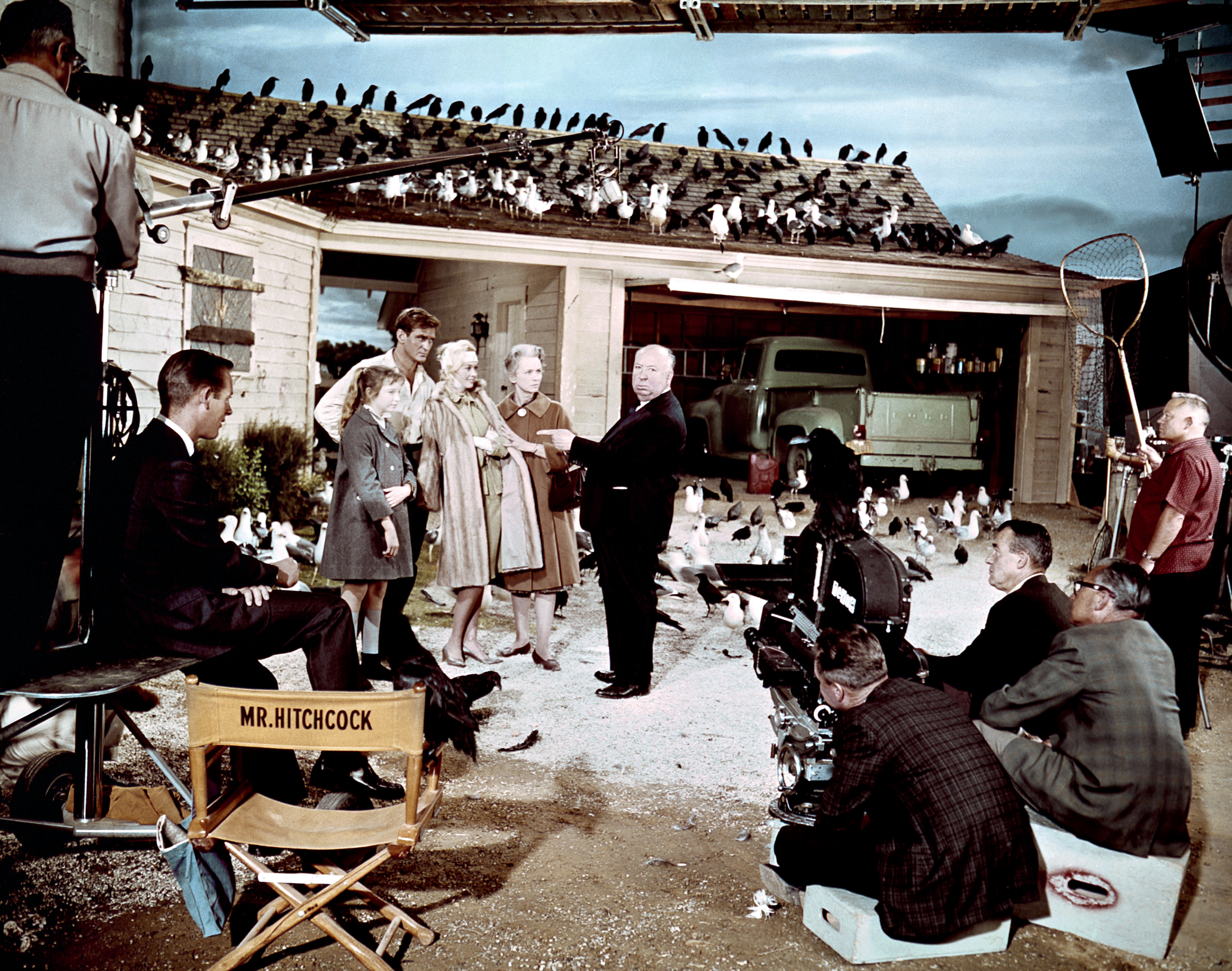
Developing the shooting schedule
is the job of the production manager. Knowing how the director wants the film to look gives the production manager a feeling for how long and how difficult the filming will be. A number of variables help determine how many days the crew will need to shoot the film. These variables include traveling to distant locations, construction of elaborate sets or lighting setups, and planning long and complex camera movements. By knowing how many days will be needed, the production manager can plan a schedule for shooting the motion picture.
To save time and money, the production manager plans a schedule in which most of the scenes will be shot out of the order in which they appear in the script. For example, if scenes one, five, and nine all take place in the same living room, it will save time and expense to shoot them all at once. This way, the crew only has to set up the lights once and the production manager only has to organize the materials needed on that set once. If the scenes were shot in the order in which they appear in the script, the crew would have to set up its equipment three separate times.
Preparing the final budget.
With the shooting schedule prepared, the production manager can begin laying out the actual cost of the film. The manager must stay within the guidelines of the estimated budget and the amount of money raised from the investors. The manager can specify what equipment to use and how much it will cost, and can decide how much time will be needed to edit the film. A shorter time will be required if the director plans the film carefully in the preproduction stage. More time will be needed if the director improvises on the set. This means that, as the film is being shot, the director works to discover the best way to play a dramatic moment or find the most appropriate camera position.
The production manager makes a final budget after reviewing the script for its costume, location, and acting needs, and after identifying the necessary equipment and size of the crew. The final budget includes above the line costs and below the line costs. The above the line costs are the salaries for key actors, the fees for the producers and director, and the purchase of the script and other creative fees. Below the line costs include crew salaries, equipment rentals, insurance costs, film and sound stock purchases, and rent for editing rooms. The producers and the director then review the budget and shooting schedule. They may request adjustments to figures they feel are unrealistic.
During the preproduction period, the producers and production manager refine the budget. They plan how the budget will be spent day by day until the film is completed and ready for distribution. The production manager and the assistant director work with the heads of the various departments so they can plan their work to meet the needs of the schedule and the budget.
Assembling the cast.
As the budget and shooting schedule are being completed, the director works with the producers and casting director to complete the cast. The casting director’s job is to screen the applicants. He or she sometimes considers hundreds of actors for each major role in a film. Through a series of auditions and interviews, the selection is narrowed down to a few candidates for each role. At an audition, a performer may be asked to read from the script or to act in a scene previously prepared. The director and producers select the final cast from the pool of performers identified by the casting director. Actors are chosen for their talent and their ability to blend with other performers and adjust to the needs of the film. The actors are also selected for how appropriate they are for the role, based on their appearance, temperament, and the director’s interpretation of the role.
Holding rehearsals.
If time and budget permit and the performers are available, rehearsals take place before shooting. During rehearsals, the director and the cast explore the characters and script together. They read through the script and discuss the story and the role each character plays in it. They then act out the scenes and rework them to fit their talents and interpretations. They may use improvisation to explore each character and the possible ways to play a scene.
Not all directors hold preproduction rehearsals. Some only discuss the story and characters with performers at this time. They prefer to wait until the actors are actually on the set to rehearse each scene. Performers with small parts usually meet the director for the first time the day their scene is shot.
Production.
During the preproduction period, the filmmakers imagine the movie they want to make. They gather the people and materials needed to realize their idea. During the production period, the movie-as-imagined is brought to life and recorded on film and audiotape or digital file. The creative work of the preproduction period is continued and extended. However, instead of working with words or drawings or budgets on paper, the filmmakers work with actors and the materials of real life.
Filming on a sound stage.
A sound stage is a hangarlike building in which sets can be built. Shooting on a sound stage enables the production team to design and build the sets to exact specifications. Removable walls in the sets allow the crew members to place the camera exactly where they desire, and to create precise scale and details in their sets. Achieving the desired lighting is easier because each stage has a grid of pipes suspended from the ceiling. This grid allows the director of photography to hang each lighting unit with precision. The stage is enclosed, which eliminates noise and distractions from the outside world. Working on a stage saves time when setting up, and it eliminates moving the film’s company from place to place because everything is shot right on the sets.
The disadvantage of filming on the sound stage is the extra cost. Constructing sets is much like building a house. A designer must make architectural plans of the set. Carpenters must build it, and the set must be painted and furnished.
Filming on location.
The advantage of shooting on location is that the set—such as a skyscraper, mountain, or harbor—already exists. Additions can be made to the location to create the appropriate look. If, for instance, the scene needs a driveway but there is none at the site, a driveway can be added. 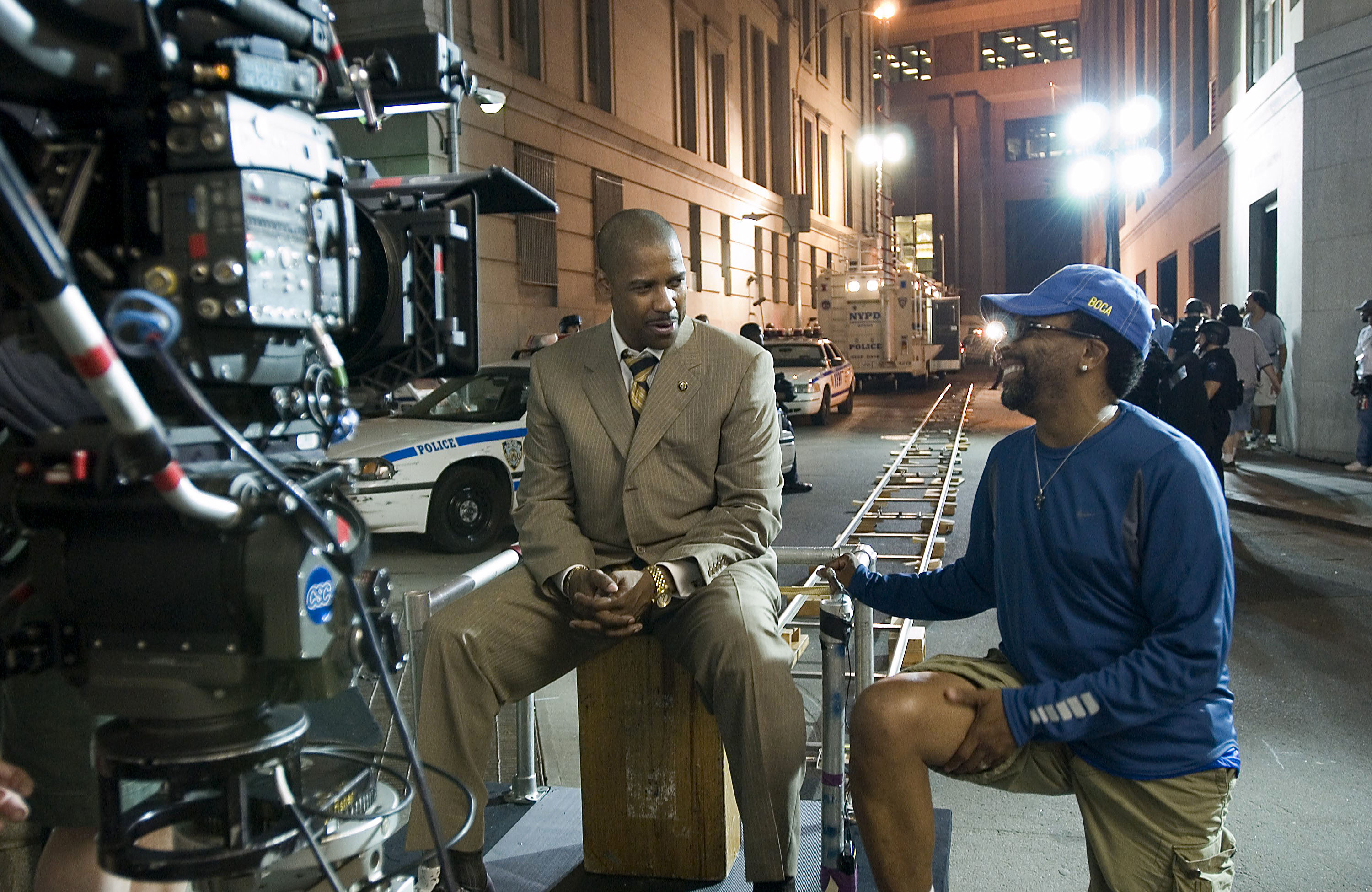
The main disadvantage of shooting on location comes from the fact that locations were not designed for filmmaking. The filmmakers may not have the room to spread out their equipment and freely move the camera. They must bring in generators to supply enough electric power for their lights. The location is more difficult to protect from outside intrusions, such as pedestrians, noise from traffic and airplanes, and changes in light throughout the day. The cast and crew must be transported to the locations, which may be in distant parts of the world. The personnel must be fed and housed. However, the success of many films comes from the authentic look and feel of the location, which outweigh the disadvantages.
Some filmmakers shoot outdoor scenes on a back lot, an open-air area on studio property. A back lot set is a re-creation of an exterior, such as a city street. Filming on a back lot saves time and money that would be consumed shooting on location. However, the results may be less authentic-looking than location shooting.
Preparing to shoot.
The location or the set on the sound stage must be carefully prepared before the camera can interpret the action. The shooting day usually starts early. Trucks begin arriving with lights, props, and camera and sound equipment at 6 or 7 a.m. The set decorator arranges the props. Hairdressers and makeup artists arrive just before the performers. The actors spend from one to several hours having their hair and makeup prepared for each day’s shoot. The director and assistants review the schedule for that day’s work. The director of photography directs electricians called gaffers in setting up the lights. 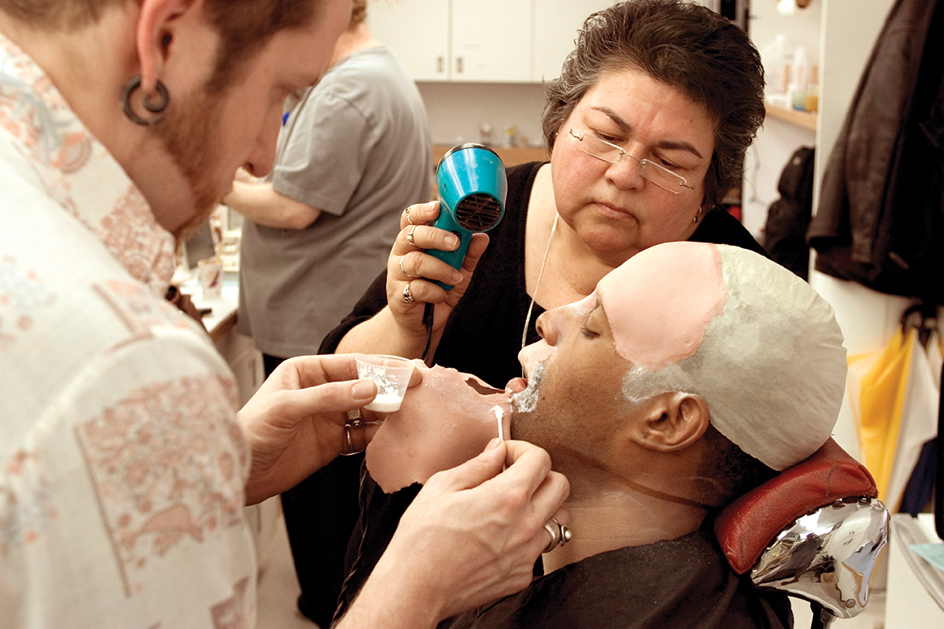
The set must be lit brightly enough for an image to be made on film. Lighting a scene is one of the most time-consuming and important aspects of film production. Lighting creates a mood or a tone for each scene. The lighting director or director of photography uses contrast as a major tool. Contrast is the relative brightness of a character or object against surrounding shadows and darkened areas. A happier, more upbeat mood can be created by lowering the contrast and making the scene brighter. A scene filled with shadows and set off by a few small areas of bright light is usually more somber. In a mystery movie, a threatening tone can be developed in a darker scene emphasizing heavily contrasting light. An audience sits in expectation, waiting for something or someone to jump out of the shadows. 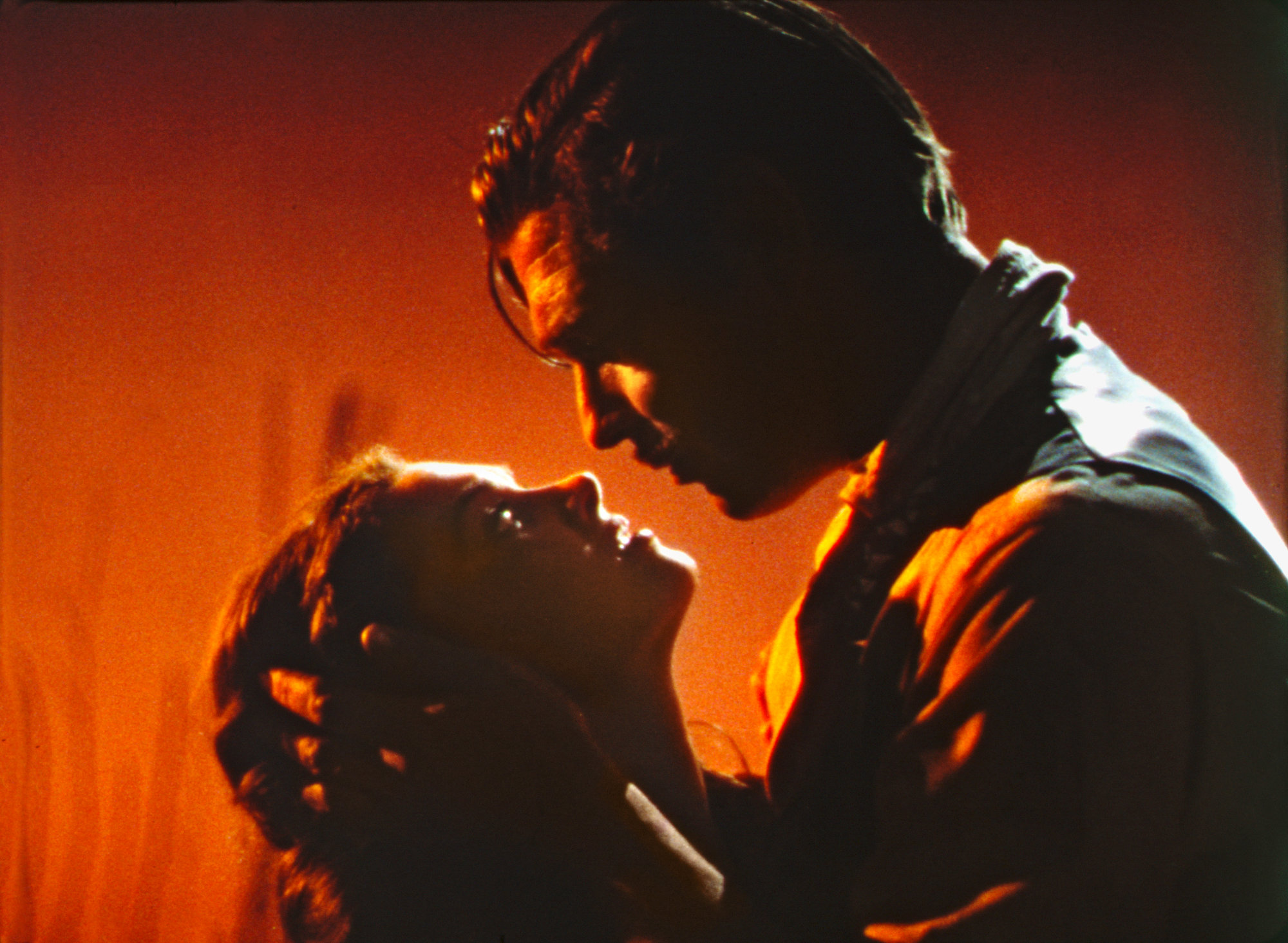
To begin work on a scene, the director and actors walk through the action for the camera crew. After the blocking is clear—that is, how the performers should move—the director and cast leave the set to rehearse while the camera crew lights the set.
As the lighting is being adjusted, the performers and director come to the set. They review their work from the rehearsal period, focusing on their characters’ actions and reactions in the upcoming scene. Unlike live theater, where the performer acts in a continuous time sequence, film requires a performer to work in fragments of scenes. Each shot in a film seldom covers more than a minute or two of the film’s story, and, as explained earlier, the scenes themselves are shot out of order. Consequently, film performers must develop their characters without the help of continuity, and the actors must have a strong sense of the film’s time sequence. Acting in fragments has some advantages, however, over stage acting. In the movies, the performer can concentrate on the short sequences of dialogue or movement that go into a given shot. Many takes (versions) of a shot can be recorded, allowing the actors and camera crew to explore and perfect each moment.
Shooting the movie.
After the lighting preparation is completed, the director and performers go onto the set and rehearse in front of the camera operator and a technician called the sound mixer. The director works with actors to polish their performances. In addition, the camera operator checks to be sure that the photography will be satisfactory, and the sound mixer makes certain that a good, clear audio recording can be made. Then the shot is recorded either on film or digitally. Usually, there are several takes of each shot. The director may call for a retake to improve upon a performance or to ask for a different interpretation of the scene. The performer may want to try a new approach, or the camera operator may want to improve the framing of the shot—that is, the arrangement of elements in the shot—or the camera movement.
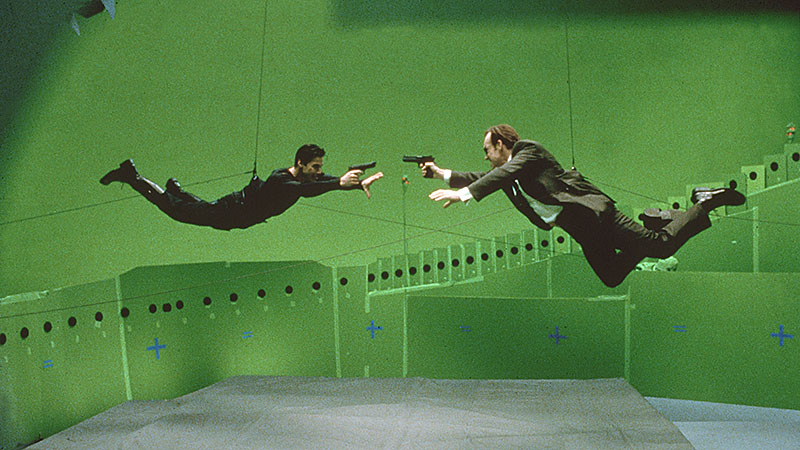
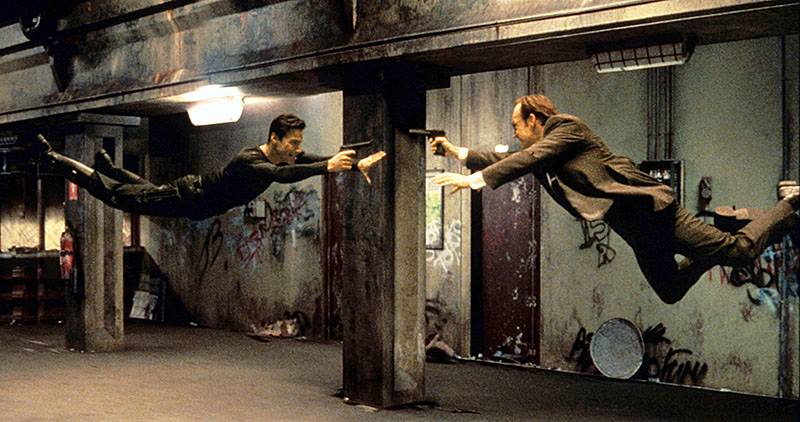
Much of the shot’s impact depends on the choice of camera lens and position, and on the blocking of the actors. A long lens known as a telephoto lens makes a scene look flat. A wide-angle lens deepens space. Camera position influences how an audience understands a scene. For example, if the director places a camera so that it looks at a character through a fence, the audience will probably feel that the character is closed in, almost imprisoned.
Blocking refers to how the performers move during a scene. If a character moves toward the camera and grows large in the frame, he or she will take attention away from the other performers in the frame. If characters walk away from the camera, the audience will feel that the figures are isolated or vulnerable or less important, depending upon the preceding action and scenes.
Filmmakers use a device called a clapstick to identify the takes, shots, and other information that they will need during the post-production stage. A clapstick consists of a slate attached to two hinged boards. The slate is marked with the number of each scene and take. The camera operator photographs the clapstick before each take. This visually identifies the scene and take number. A member of the camera crew also says aloud the scene and take numbers, and then claps the two boards together to make a sharp sound. The spoken information and clapping noise are recorded on the sound track. This creates an audio record just as the slate preserves a visual record of the filming. 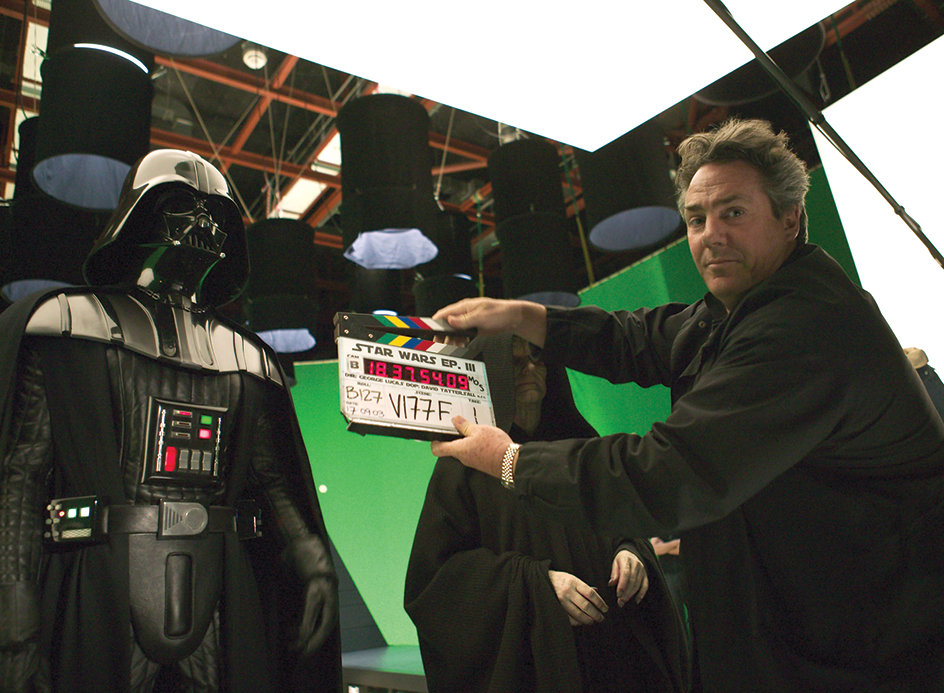
After each take, the director consults with the performers, the director of photography, and the camera operator. They decide on any adjustments that could improve the shot. Traditionally, they had to rely on their instincts of how the take would look on the film. Since the 1970’s, however, many directors have used a video assist to help judge the takes as they are shot. The video assist is a video recording system attached to the movie camera. It records an image on a digital storage device while the camera is filming. The video can be examined immediately after shooting. This is an advantage over the camera film, which must first be processed in a laboratory. The video assist thus provides the filmmakers with a faster way to judge each shot, allowing them to determine what improvements they need to make in the next take. Feature films are increasingly shot and edited in high-definition (HD) video, a type of video that produces extremely sharp images. Because HD video does not need to be developed, it can be watched immediately without a video assist. The finished result can be transferred to 35-millimeter film or distributed digitally for projection in theaters.
If the movie is shot with a film camera, after the director feels satisfied with a take, it is printed—that is, sent for processing by the film laboratory. A copy called a contact is made to check the framing. The film that has been shot is then digitized in preparation for editing. Digitizing is the process of converting a sound or image into a numerical format that computers can read. If the movie is shot digitally, the editor can work on the digital files without the need to transfer formats.
After all the takes of a shot have been made, the crew, supervised by the director of photography, sets up the lights and camera angle for the next shot. The performers go to their dressing rooms, or to their trailers if they are on location, to wait for the crew to complete its work. Meanwhile, the director talks to the designers about the next day’s set. The director may also meet with the producers and production manager to discuss the schedule, budget, or other production-related matters. At the end of the day, if the work is on location and completed, the crew packs and moves to the next location.
Post-production.
The production stage provides the raw materials from which the motion picture will be constructed. Traditionally, this raw material consisted of fragments of film and audiotape. Today, much of the sound and video are saved as digital files. The fragments and files record the characters, places, and events that make up the film’s story and interpretation. Post-production is the stage during which the raw material, which has been digitized, is edited on a computer. Editing refers to the total process of putting a movie together in a final form. In many ways, editing resembles the writing stage of filmmaking. But instead of constructing the story from words, the editor and director select the best shots and dialogue. They use them to lay out the movie’s structure and to determine its moment-to-moment shape.
Throughout the process, the editors pay close attention to the rhythm and tempo of the film. They carefully choose where each shot begins and how it flows into the next shot. Every aspect of the film is analyzed and evaluated during editing. If necessary, the movie can be reinterpreted at this stage to take advantage of its strengths and to diminish its weaknesses.
Preliminary steps.
The editing process begins after a sequence of important steps to prepare the sound track and the filmed images for editing.
The sound and picture are synchronized in a computer—that is, placed so the sound exactly matches the action in the picture. For example, when an actor speaks on the film, the audience should hear his voice at the same time. The clapstick sound is aligned with the frame where the bar can be seen closing, assuring that the rest of the take is in “sync.” After the film and sound have been “synced up,” the assistant editor makes a detailed written record of each shot. This log enables the editors to keep track of the thousands of feet of exposed film.
Traditionally, the film shot each day was processed overnight to make prints that the director, editor, and others could view in a screening room. The scenes filmed each day were called dailies or rushes because of the haste with which they were processed. Today, however, almost all editing is done on computers, so filmed dailies have been replaced with digitally recorded scenes called video dailies or video rushes.
The editor, director, producers, and other crew members review the scenes filmed the previous day. In this way, they can check on the quality of their work. If necessary, they can adjust their approach. They can reshoot a single shot or an entire scene before leaving a location. The director and editor discuss which shots to use and sketch out how the shots should be arranged. They can also create new scenes to fill in gaps in the story they did not realize existed. Most important, they can begin the actual editing process.
Editing the film.
If the filmmaker chooses to shoot on traditional film, selected takes from the dailies are printed to become an inexpensive copy called the work print. The work print is run through a telecine << TEHL uh sihn ee >> machine, a device that converts film images to TV signals. Both the pictures and the sound are then digitized and stored in a computer. 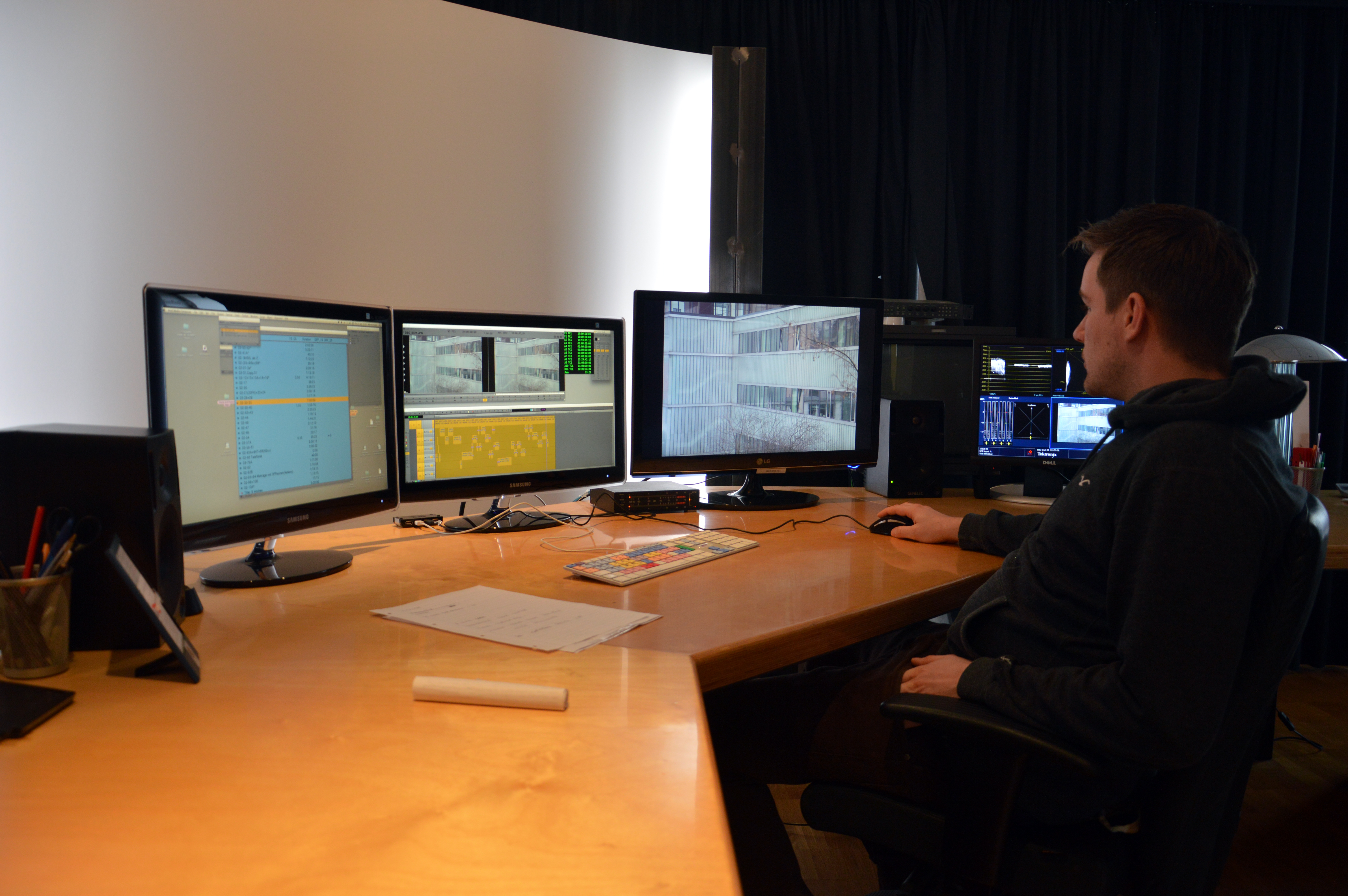
Today, almost all film editing uses computer systems known as nonlinear editing systems. The editing systems are called nonlinear because film editors can quickly call up images or bits of sound from the computer’s digital files in any order instead of scrolling through a length of tape in linear fashion looking for what they want. Nonlinear systems enable editors to accomplish complex changes in minutes or even seconds. At any time during the process, an editor can instantly replay any shot or series of shots on a video monitor with any choice of sound accompaniment. Editors no longer have to physically splice (join together) lengths of film and store them in massive filing systems. The new computer technology also allows the creation of special effects that in the past would have been too costly or even impossible to create.
The rough and final cuts.
Based on the discussions with the director and producers, the editor begins to assemble the selected scenes and put them in order. This preliminary version of the film is called the rough cut. It follows the order of the screenplay, using the shots selected by the director.
After the editor completes the rough cut, he or she screens it with the director. Based on the director’s response, the editor may use different takes of shots, and may change the order of scenes. Scenes that fail to add to the storytelling might be dropped. The editor makes these adjustments, which clarify, strengthen, and refine the story. This version is called the fine cut.
The director then screens and analyzes the fine cut with the producers. To get a fresh opinion, the filmmakers may invite friends and fellow filmmakers not involved with the production. They suggest additional adjustments to improve the story and the filmmaking. The director continues to supervise cuts until he or she is satisfied, given the limitations of the budget and the post-production schedule. In many cases, the studio or the producers then take over and polish, revise, or completely restructure the film as they see fit. Very few directors have the authority to determine the final cut (finished version) of their films.
Adding music and sound effects.
During the editing, the composer and sound editor join the other filmmakers. Some composers want to be involved from the initial planning of the film to absorb its mood and to understand its development. Most, however, come in during or after the rough cut has been completed.
The composer and sound editor will screen the motion picture with the director, identifying appropriate moments for sound effects and music. They discuss the kind of music the film calls for and the instruments that will be used in recording the music. Sometimes, the discussions result in a scene being re-edited. The director may decide that some dialogue can be effectively replaced by music.
As the composer prepares and records the music, the sound editor adds sound effects, background noises, and additional dialogue. These sounds contribute to the character and impact of the film and strengthen the desired illusion.
Mixing the sound.
The various sounds and music are blended together onto final tracks during a mixing session in a mix studio. A sound technician sits at a computer that controls many aspects of each sound track. The technician can precisely adjust the volume and quality of every sound element, including dialogue, music, and sound effects. The director, producer, editor, and sound editor provide advice during this phase to ensure that the sound track will be satisfactory. 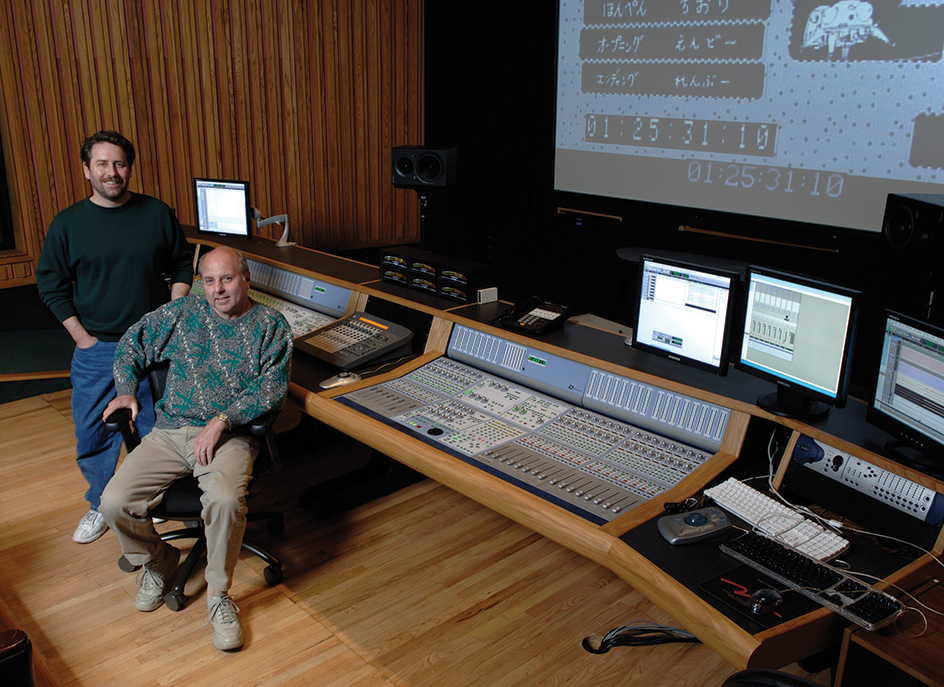
When the editor is satisfied with the final edited version, the motion picture is said to be locked. The editing system then produces an edit decision list (EDL), a computer file that records all the information concerning the images and sounds to be used in the film.
The answer print.
After the picture has been locked and the sound editing completed, the filmmakers take the final cut to its last post-production phases. Film editors assemble the scenes, shot for shot, to exactly match the edit decision list and create the finished film.
Next, the laboratories print a new copy on a single, continuous piece of film. They then copy the mixed sound track along the edge of this new print, creating an answer print. This version includes the motion picture’s titles and credits, as well as optical effects that were decided upon during the editing. The filmmakers can make small adjustments at this point. By reprinting, they can make individual shots darker or lighter, or adjust their color. Most filmmakers produce an answer print and a final film print even if the movie is shot with high-end digital cameras so that they can distribute their movie to theaters that do not have digital projection.
When the filmmakers believe their work is complete, they preview the picture for an outside audience. Based on the audience’s response, whole scenes may be re-edited and reprinted. After the filmmakers are satisfied with the film’s appearance, the post-production stage is complete. The product is now ready for distribution.
How motion pictures work
As we watch a motion picture, we are actually watching many thousands of individual still pictures called frames. Each new frame shows an image slightly different from the image in the preceding frame. When a single image is flashed upon a screen, the human eye continues to see it for one-tenth of a second after the screen has gone black. Because of this phenomenon, called persistence of vision, we see a continuous flow of action when viewing a series of images flashed in rapid succession.
The camera.
In principle, a movie camera is like a still camera except that it takes many pictures each second. In addition, the camera mechanism is precision-engineered to run almost noiselessly to avoid interfering with sound recording.
The camera lens focuses an image, consisting of light rays, upon a single frame of unexposed film. The image boundaries are precisely defined by a rectangular opening called the aperture. After the frame has been exposed, a revolving shutter closes, temporarily shielding the aperture from further light. A metal tooth called a claw automatically engages the sprocket holes on the side of the film. The claw quickly moves the exposed frame down, pulling a fresh frame into position. While a register pin holds the unexposed frame in exact position, the shutter revolves and a burst of light exposes the new frame.
The film’s stop-start movement is called intermittent motion. For the standard film projector, this cycle takes place 24 times a second for sound film. For slow-motion filming, the camera mechanism is run faster. For faster motion, the mechanism is run slower than 24 frames a second. The images are then projected at the normal 24 frames a second. Digital projectors can use varying frame rates from about 30 frames per second up to 120 frames per second.
Unexposed film is loaded into the supply chamber of a lightproof magazine, which can be rapidly mounted and removed from the camera body. After the film has been exposed, it passes into the magazine’s take-up chamber. It is then unloaded in the dark and sent to a film laboratory for processing.
The film
is made of light-sensitive chemicals called emulsion coated on a flexible plastic strip called a base. Any camera can use either black-and-white or color film. Film length is expressed in feet, but the standard widths are given in millimeters. 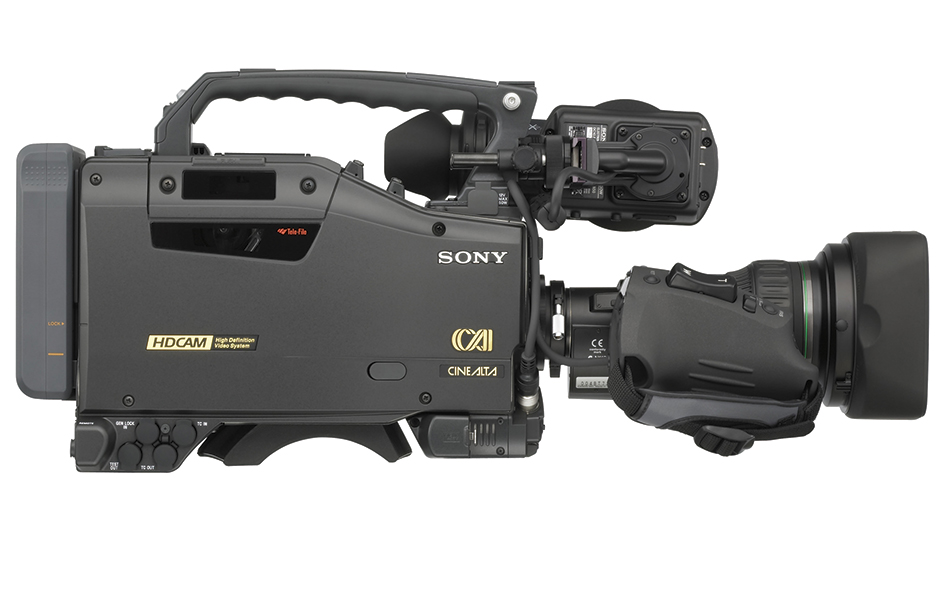
The oldest film in current use is 35 millimeters (about 13/8 inches) wide. This size was originally introduced in the United States in 1899 and soon became the standard width for making motion pictures. Almost all film shot for theater exhibition is 35 millimeters wide. Film shot for television and for classroom use is 16 millimeters (about 5/8 inch) wide. Home movie film is 8 millimeters (about 1/4 inch) wide. The wider the film, the larger the area of the frame and the greater the image’s resolution (detail). Movies projected in theaters show the largest image and thus use the largest film size. Occasionally, a filmmaker will shoot a movie using 70-millimeter (23/4 inch) film, which is costly but produces exceptionally sharp images on the screen. The giant screen IMAX movies use 70-millimeter film.
In digital video, much of the image quality is determined by the number of pixels. Pixels, or picture elements, are like digital dots arranged in a grid that make up a picture. Each pixel contains information about brightness, color, and shade. The more dots, or pixels, in an image, the higher the resolution of the final picture. Digital movie cameras used for feature films usually capture images at about 4,000 pixels wide and about 2,000 pixels high. This is often referred to as 4K resolution. For big screens such as those used in an IMAX theater, filmmakers often shoot at around 6K resolution—a little over 6,000 pixels across.
The sound track
is a narrow band recorded on the side of the film image. For information on how the sound is mixed and recorded, see the section How motion pictures are made. The sound track appears on the film as a photographic recording that can be optically played back through a projector. 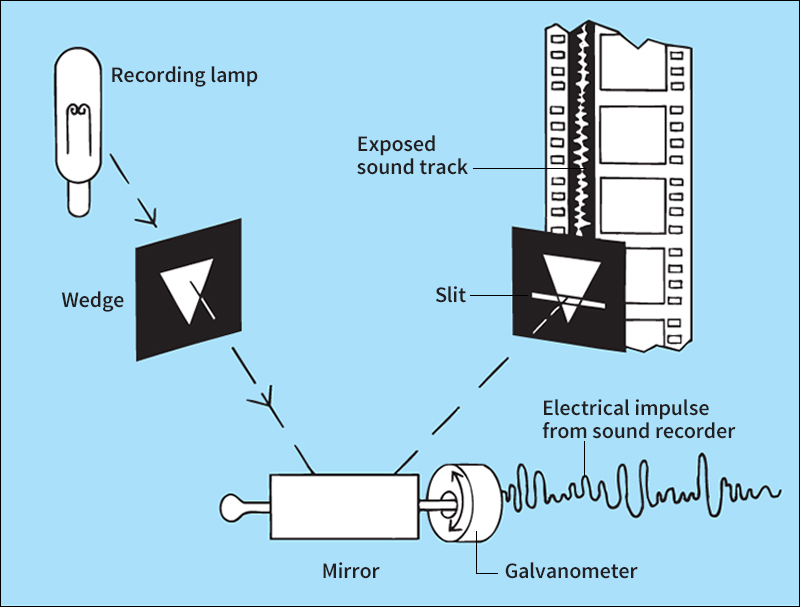
The sound is transferred from the magnetic tape to the photographic film by means of a galvanometer, an instrument that reacts to varying electric currents. At the heart of the galvanometer is a coil of wire that turns when an electric current passes through it. The direction and distance that the coil turns varies according to the direction and strength of the electric current. In this case, the current is produced by the magnetic sound recording. A wedge-shaped beam of light is projected onto a mirror attached to the coil on the galvanometer. As the coil quivers in response to the sound recording, the mirror vibrates accordingly. This in turn makes the reflection of the wedge-shaped beam tremble. This trembling beam is reflected through a slit-shaped aperture and onto the film. This action produces a continuously changing area of exposed film called a variable-area sound recording.
In digital recording, the sound waves are translated by an analog-to-digital converter into numerical values that the computer can read. An analog recording stores a signal in a form that looks like the wave form of the original sound. The computer records the sound information many times per second. Each instance of the recorded sound is called a sample. In general, the higher the sample rate (number of samples the computer takes of the sound), the higher the quality of the sound recording.
The projector
reproduces the film sound track and throws the visual images onto a screen. Like a camera, the projector has sprockets that pull the film through its mechanism. It also uses the intermittent-motion principle to hold each frame stationary during the projection. Some of the earliest cameras could even be adapted to serve as projectors. 
In the modern projector, a rotating shutter prevents light from reaching the film until each frame is stationary. Then the shutter allows the bright light source to shine through the film and project the image through the focusing lens onto the screen. To minimize a flickering image, the shutter produces two short flashes of light for each projected frame instead of one long one. In a single second of film projected at 24 frames a second, there are 48 flashed images. Some projectors use a pulsing light source. This eliminates the need for a shutter.
The projector mechanism must allow for different principles of sound and film reproduction. At the point where the image is projected onto the screen, the film is moving in the intermittent, start-and-stop fashion just described. However, sound can only be read (reproduced) from film while running in continuous motion. To resolve this problem, the sound head—the device that reads the sound track—scans the film after it is past the lens and is again moving in a continuous motion. To permit the image and its matching sound to be reproduced at the same time, the sound must be recorded ahead of its corresponding image on the film. In 35-millimeter film, for example, the sound track is advanced 21 frames ahead of its corresponding image. 
To reproduce the sound, an exciter lamp sends a narrow beam of light through the photographic sound track. The variations of light emerging on the other side shine into a photoelectric cell, where light is converted into electrical impulses. These tiny electrical impulses are then greatly amplified and fed into the theater loudspeaker system. If a motion picture has a stereo or quadraphonic sound track, multiple sound tracks are recorded on magnetic strips coated on the release print. The strips are read by a projector equipped with magnetic replay heads.
The screen.
A typical theater screen is made of white plastic stretched on a metal or wooden frame. The screen is coated with millions of tiny glass beads. The beads make a highly reflective surface that looks equally bright no matter where the viewer sits in the theater. Screens vary in size, depending upon the size of the theater in which they are used. Since the late 1960’s, smaller screens have become more common. Many theaters have become multiplexes consisting of several smaller theaters, each showing a different motion picture.
Traditionally, the sound system’s loudspeakers are placed behind the screen. The screen has thousands of small holes through which the sound is allowed to pass. There are 20 to 30 holes per square inch (3 to 6 per square centimeter). The holes are too tiny to be seen by the audience, so the sound seems to come from the picture itself. Today, theaters with surround sound have several speakers placed around the audience, rather than just behind the screen. This provides a richer, more engaging audio experience.
The motion-picture industry
Movies are a billion-dollar industry. There are hundreds of thousands of screens throughout the world showing movies. Millions of people each week buy tickets to see a movie.
The motion-picture industry is divided into three branches—production, distribution, and exhibition. From about 1915 to the late 1940’s, large movie studios in the United States dominated all three branches of the industry worldwide. The studios not only made the films, they distributed them to the theaters. The studios owned the biggest and most important theaters.
In 1948, the Supreme Court of the United States ruled that studio control over production, distribution, and exhibition was an illegal monopoly. The court ordered the motion-picture studios to give up their role as exhibitors. By 1953, most of the Hollywood studios had sold their movie theaters.
Also during the late 1940’s, the studios began to curtail their role in the production of movies. This was partly because of economic competition from television. The studios discovered that, in most cases, they could earn more money by financing and distributing movies made by independent producers.
Since the 1940’s, film production in other countries has greatly increased. India’s motion-picture industry, for example, which is known as Bollywood, produces thousands of films yearly.
This section deals with the distribution and exhibition of movies in the United States. For information about production, see the section How motion pictures are made. This section also describes attempts by government and private organizations to censor movies and the industry’s attempts at self-regulation. The section ends with a discussion of film festivals and awards.
Distribution.
Distributors are responsible for advertising the film and delivering it to its audience in theaters and in homes through television, DVD, or digital subscription services. Major studios serve as the distributor for most American films. Independent distribution companies handle the remainder.
Some producers secure distribution before the film is even made. At this early stage, distributors might be interested in the movie because of its star or because the film will be a sequel to a popular film. If the producers have not obtained distribution before filming, they usually wait until the final print of the film is made before presenting it to distributors.
The distributor charges the film’s producer a fee of 30 to 50 percent of all the money the film takes in. A new producer may have to pay a larger fee to attract a distributor than does an established producer with a record of profitable films. Distributors also charge for making the copies of the film sent to the theaters and for advertising and publicizing the film. The costs of copying, advertising, and publicity come out of the first money the film earns. The producer gets money only after these costs and the distribution fees have been deducted. The distributor can thus make a profit on a picture, while the film’s producer may earn nothing. If a movie is distributed digitally, there are minimal costs in making and distributing multiple digital copies. However, high-end digital projectors are much more expensive than traditional film projectors. Therefore, the cost of digital projectors in movie theaters is often shared with the distribution companies.
After the producers and distributor arrange a distribution deal, the distributor carefully identifies the film’s audience. The distributor generally arranges for sneak previews to judge the film’s effectiveness and to identify its main audience. At a sneak preview, the distributor assembles an audience that may be chosen for such characteristics as age, income level, or occupation. During the screening, the distributor’s staff usually watches the audience, observing their reactions and level of enjoyment. Afterward, the audience may be asked to fill out information cards on their reaction to the film. They may also meet with the distributor’s staff to discuss their reactions. After reviewing the preview responses, the distributor designs the advertising campaign and decides how to release the film most effectively. Sometimes, the audience responses prompt the distributor to ask the producer to re-edit or reshoot parts of the film.
Films with a broad appeal will receive widespread distribution, perhaps opening in thousands of theaters on the same day. Films with more specialized audience appeal generally open in a few carefully selected theaters. Widespread distribution is intended to quickly reach the broadest possible audience. The narrower or platform approach tries to build and sustain interest in the film over time. It does this through good critical reviews and favorable word-of-mouth from pleased viewers.
Most advertising campaigns are designed to make their heaviest impact for the first two or three weeks of a film’s release. If the campaign attracts the right audience and these viewers enjoy the film, they will tell their friends. This will sell the movie to a new audience.
Advertisers sometimes design a second campaign to appeal to a different portion of the public. For example, the film may be an action movie with a star not usually associated with action films. The first campaign might reach out to that part of the public interested in action movies. The second campaign would be designed to attract that part of the public interested in seeing the star. The advertising campaign and the film’s theatrical release also prepare the way for the film’s release on DVD, digital subscription services, or cable channels. Digital subscriptions and cable TV have become a major market for distributors. Studios release some films directly on DVD, cable TV, or digital subscription, bypassing theatrical release entirely.
If the film can earn three times its budget in ticket sales during its first year of domestic release, the producers and their investors will begin to make a profit. The film will then be considered a commercial success. Other sources of revenue include foreign distribution, sales to broadcast TV, and DVD sales.
Exhibition.
Financial arrangements for exhibiting a movie can be complicated and may vary from film to film. In the simplest arrangement, the distributor charges an exhibitor a flat fee. More commonly, the exhibitor pays the distributor a percentage of the weekly box-office profits (box-office receipts minus theater operating expenses), often with a minimum payment guaranteed. For example, a distributor may require 90 cents of every dollar of profit from an exhibitor during the first week if the film is expected to be a hit. The percentage would then decline in succeeding weeks of the film’s run at the theater. Typically, however, the exhibitor keeps about 50 cents of every dollar collected from ticket sales. The other 50 cents goes for costs of distribution and production. The flat fee or percentage the exhibitor pays the distributor is called the film’s rental.
Theater owners place bids with distributors for the films that they want to exhibit. The limited number of films produced has forced exhibitors to bid higher and higher against one another for the right to rent especially desirable films. Exhibitors, in turn, have raised ticket prices.
Censorship and self-regulation.
During the first half of the 1900’s, several state and local governments had censorship boards that reviewed all movies before they could be shown in their areas. Some civic and religious groups also had boards that advised members whether they believed a movie to be offensive.
Censorship remained a major factor in the American movie industry until the 1950’s. Beginning in 1952, the Supreme Court of the United States made a series of decisions that undercut the legality of the local and state boards. In 1965, the last strong state censorship board—that of New York state—went out of existence.
The motion-picture industry’s efforts to regulate itself date back to 1922, when the movie studios established the Motion Picture Producers and Distributors of America. This organization reviewed movie scripts before filming began, to delete material that the organization felt might be considered offensive.
In 1945, the organization became the Motion Picture Association of America. In 1968, the association adopted a classification system. Instead of reviewing scripts before production, the association rates the completed film as to its suitability for various ages. The association classifies films into five categories: G—general, all ages admitted; PG—all ages admitted, but parental guidance suggested; PG-13—all ages admitted, but parents are strongly cautioned to give special guidance for attendance by children under 13; R—restricted, persons under 17 must be accompanied by a parent or guardian; NC-17—persons under 17 not admitted.
Festivals and awards.
The first major film festival was held in Venice, Italy, in 1932. Today, hundreds of festivals are held annually. The largest and probably best-known festival is held in Cannes, France. Other important festivals take place in Venice, Italy; Berlin, Germany; London, England; Moscow, Russia; New York City, New York; Park City, Utah; Toronto, Canada; and San Sebastián, Spain. 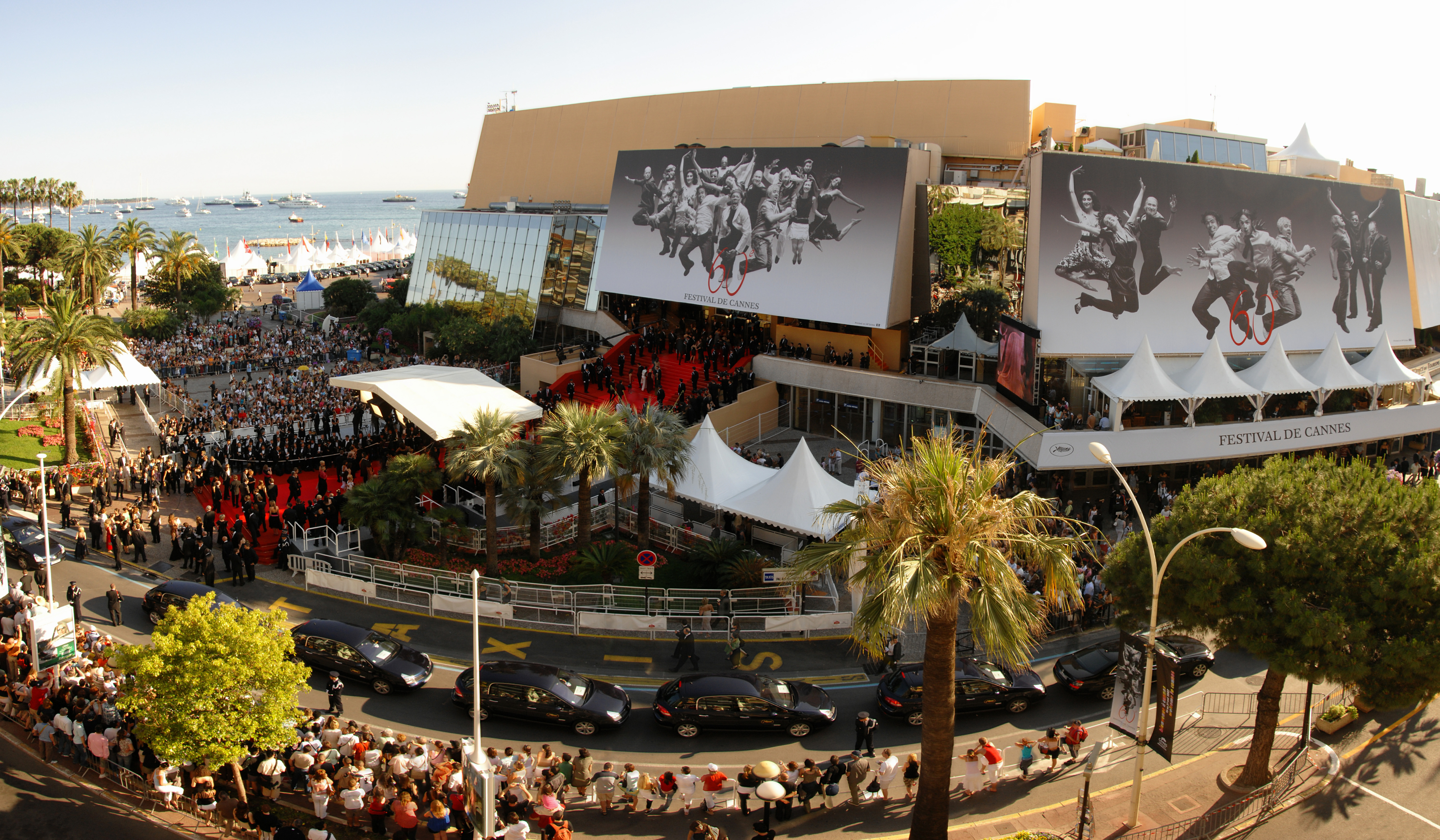

The best-known movie awards are made each year by the Academy of Motion Picture Arts and Sciences. These awards, called the Academy Awards or Oscars, are presented for outstanding achievements in filmmaking during the preceding year.
A number of United States organizations of critics issue annual film awards, including the National Society of Film Critics, the New York Film Critics Circle, and the Broadcast Film Critics Association. The Hollywood Foreign Press Association gives the annual Golden Globe Awards. The best-known awards given annually in other nations include the Australian Academy of Cinema and Television Arts (AACTA) Awards, the British Academy of Film and Television Arts (BAFTA) Awards, the Canadian Screen Awards from the Academy of Canadian Cinema & Television, and the Filmfare Awards from Filmfare magazine in India.
The history of motion pictures
Since earliest times, people have been interested in portraying things in motion. During the late 1800’s, developments in science helped stimulate a series of inventions that led to projected motion pictures on celluloid film. These inventions laid the foundation for a new industry and a new art form.
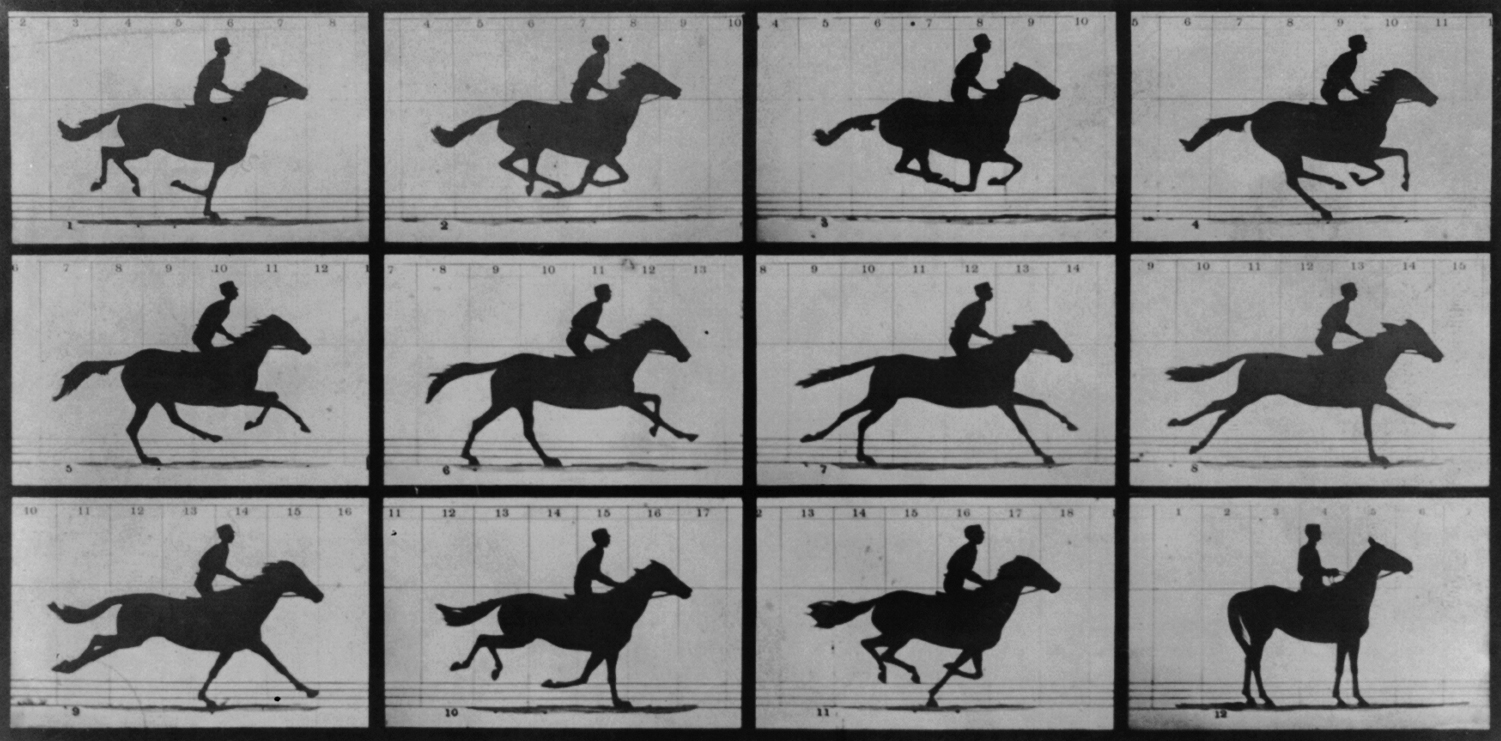
The first successful photographs of motion were made in 1877 and 1878 by Eadweard Muybridge, a British photographer working in California. Muybridge took a series of photographs of a running horse. For his project, Muybridge set up a row of cameras (first 12, then 24) with strings attached to their shutters. When the horse ran by, it broke each string in succession, tripping the shutters.
The invention of motion pictures.
Muybridge’s feat influenced inventors in several countries to work toward developing devices to record and represent movie images. These inventors included Thomas Armat, Thomas A. Edison, C. Francis Jenkins, and Woodville Latham in the United States; William Friese-Greene and Robert W. Paul in the United Kingdom; and the brothers Louis Jean and Auguste Lumière and Étienne-Jules Marey in France. Through their efforts, several different types of motion-picture cameras and projectors appeared in the mid-1890’s. 
Edison’s company displayed the first commercial motion-picture machine at the World’s Columbian Exposition in 1893. Edison called his machine the kinetoscope. It was a cabinet showing unenlarged 35-millimeter black-and-white films running about 90 seconds. An individual watched through a peephole as the film moved on spools. Kinetoscope parlors opened in a number of cities. However, they were soon replaced by projection machines that threw greatly enlarged pictures on a screen. These new machines allowed many people to view a single film at the same time.
The Lumière brothers held a public screening of projected motion pictures on Dec. 28, 1895, in a cafe in Paris, France. Edison, adapting a projector developed by Armat, presented the first public exhibition of projected motion pictures in the United States on April 23, 1896, in a New York City music hall.
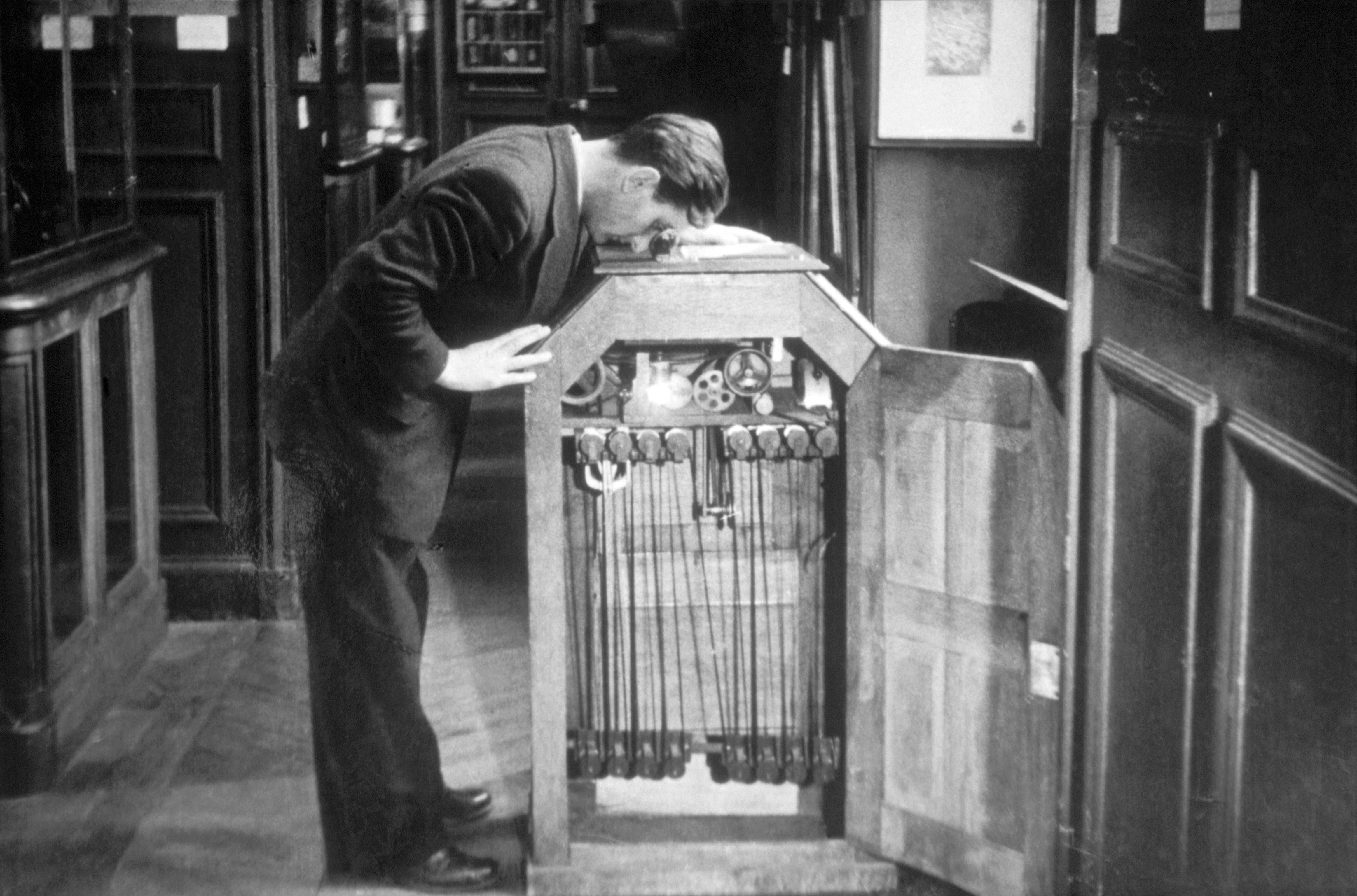
Early motion pictures.
Film screenings soon became a popular entertainment. In large cities, motion pictures played on vaudeville programs, in music halls, and in amusement arcades. Traveling projectionists brought the films to smaller cities and country towns. The most popular subjects included re-creations of current news events, such as battles in the Spanish- American War of 1898, and dramatized folk tales.
Films were made without recorded synchronized sound. However, exhibitors sometimes accompanied the images with music or lectures, or even used offscreen live actors to provide dialogue. Later, printed titles were inserted within the films. The titles gave dialogue, descriptions of action, or commentary. Titles permitted the international circulation of films, because translated titles could easily replace the originals.
Edison’s company dominated the early years of American moviemaking through its control of patents on filmmaking equipment. Edwin S. Porter, who worked for Edison as a director and cameraman, became a leader in shifting film production from current events toward storytelling. Porter’s 1903 film, The Great Train Robbery, portrayed a train robbery and the pursuit and capture of the robbers. The 11-minute Western became a sensational hit. 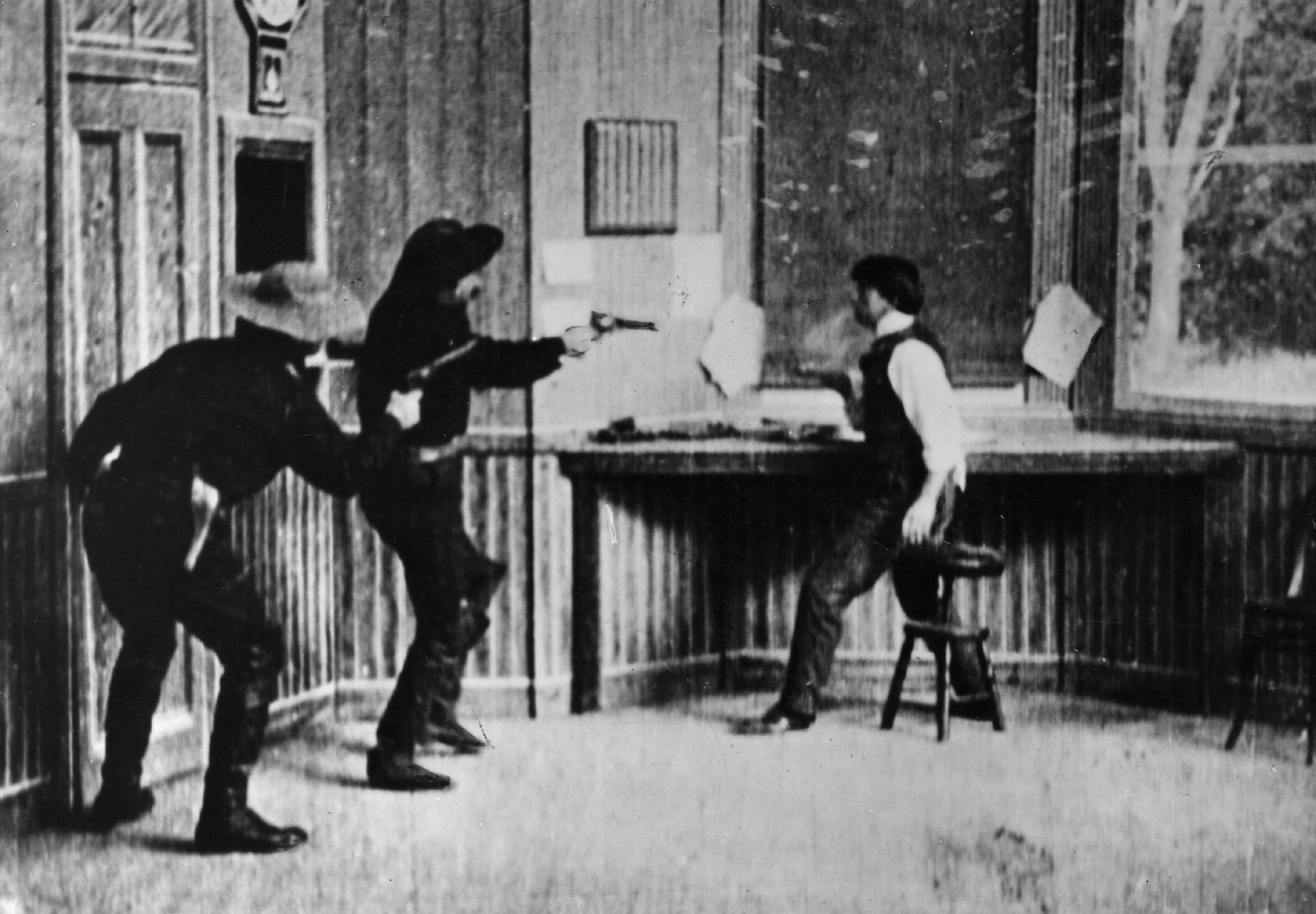
The nickelodeon.
Porter’s film and the storytelling movies that followed opened the way for a major breakthrough in motion-picture exhibition—the nickelodeon theater. Beginning about 1905, thousands of these theaters opened in American cities, mostly in commercial areas or in immigrant neighborhoods. Many small stores were converted to nickelodeons by adding a screen and folding chairs. Admission was only 5 cents, much less than competing entertainment. Nickelodeons attracted a large new audience for movies, and laid the foundation for the growing profitability and expansion of the movie industry.
The birth of Hollywood.
In the early years of American filmmaking, most movies were produced in New York City and New Jersey. However, some were made in Chicago, Illinois; Florida; and elsewhere. As the industry developed, filmmakers began working more and more in southern California. They were drawn by a climate suitable for year-round outdoor shooting and by the availability of varied scenery.
By the time World War I broke out in Europe in 1914, a number of companies had established studios in and around the Hollywood district of Los Angeles, California. After the war ended in 1918, American movies became dominant worldwide, and the name “Hollywood” came to stand for the values and style of American movies.
D. W. Griffith
was the most influential film director during the early years of Hollywood. Griffith pioneered many of the stylistic features and filmmaking techniques that became established as the Hollywood standard. His work brought wider appreciation to the movies as art. Griffith’s work helped films attract a more educated and wealthier audience.
Griffith directed hundreds of short films between 1908 and 1913, and a number of feature-length films in later years. His career ended about 1930. Throughout his career, Griffith advanced a variety of stylistic improvements. Many filmmakers before and after Griffith regarded movies as filmed theater. They placed the camera a set distance from the performers, photographing the scene from a single viewpoint as a spectator would see it in the theater. Griffith liberated camera movement. He continually shifted the camera to different distances from the action. He established the close-up shot of a face, a part of a body, or an object as a basic part of film style. Using the close-up, Griffith also led his players toward an acting style of greater realism and psychological depth than was common at that time.
Griffith also revolutionized film editing. Instead of filming an entire scene in one shot, or a few shots, he broke up scenes into many shots, filming from different angles and distances. He extended this idea of film editing to include action at different locations so that the story moved swiftly from place to place. This style is called cross-cutting. Griffith emphasized a quicker tempo of shots, of movement from place to place, and movement within a scene. As a result, his films established a breadth, freedom, and swift pace that characterized the treatment of time and space in later American motion pictures.
Griffith’s most famous, and controversial, work was the epic The Birth of a Nation (1915). The film portrayed the American Civil War (1861-1865) and the following Reconstruction period through the eyes of two families, one Northern and one Southern. The film was praised as the first great American work of cinema art. It was also criticized as racist for its portrayal of blacks and its sympathetic treatment of the Ku Klux Klan.
Movies become big business.
About the time The Birth of a Nation was released, movie companies were developing a “star system” similar to those of other performing arts, such as theater and opera. Publicizing performers became the most effective means of promoting movies and attracting large audiences. The first highly paid and most popular motion-picture stars included dramatic performers Douglas Fairbanks, Sr., and Mary Pickford, cowboy actor William S. Hart, and comedian Charlie Chaplin. 
Before World War I, foreign-made films were strong competition for American movies in the United States. Mystery serials from France and historical epics from Italy were especially popular. But during the war, European governments diverted raw material from their film industries to military needs. American movie companies seized the opportunity to become the world’s strongest film industry. Their successes enabled producers to spend money on lavish costumes and expensive sets. The studios created a sense of glamour around American motion-picture stars that appealed to audiences throughout the world.
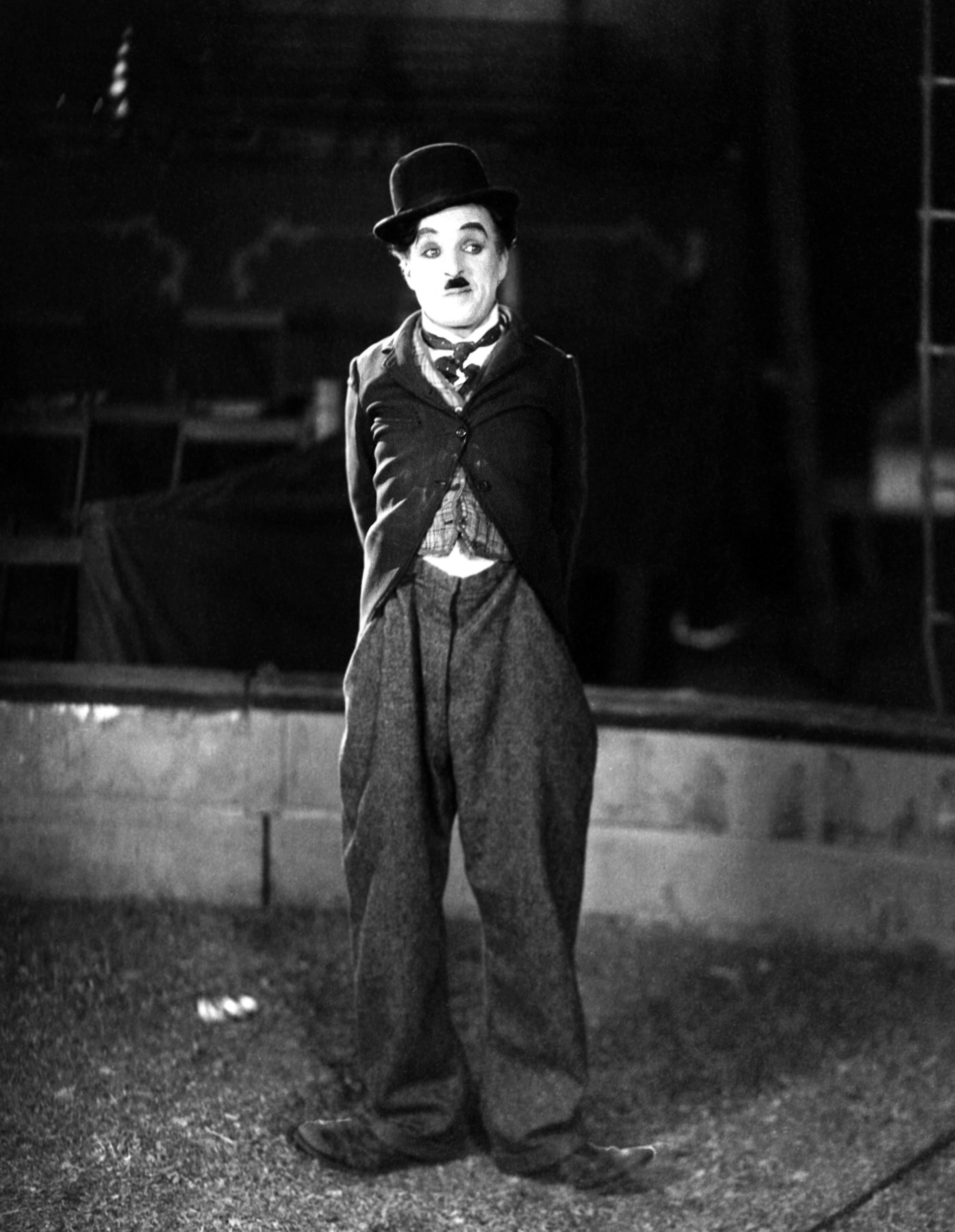
Within the United States, competition among movie companies led the most powerful studios toward vertical integration. This term describes the system in which a studio owned production facilities, distribution channels, and movie theaters. Vertical integration gave the studios control of all three major elements of filmmaking: production, distribution, and exhibition.
A small number of movie companies came to dominate the industry—Columbia, Fox, Metro-Goldwyn-Mayer, Paramount, RKO, United Artists, Universal, and Warner Bros. They adopted a system in which producers supervised a movie’s development from script to post-production. Producers, who were usually businessmen rather than film artists, kept a close watch on budgets and schedules. As far as possible, all the people working on the film were drawn from the studio payroll. They included the director, writers, designers, crew, and cast.
Vertical integration enabled the companies to use their studio stages efficiently and maintain a high volume of production. But the system placed an even greater emphasis on movie stars and familiar, repeatable genre movies. A genre film is a specific type, such as a Western or a crime melodrama.
Filmmaking in Europe.
While American movies remained popular and profitable, more demanding viewers in the 1920’s began to look to Europe for new developments in film art. Moviemakers in European countries often competed against American domination of their own theaters by developing distinctive film styles. This goal was perhaps achieved most successfully in Germany. There, many film directors, writers, and designers were also active in other arts, including painting and live theater.
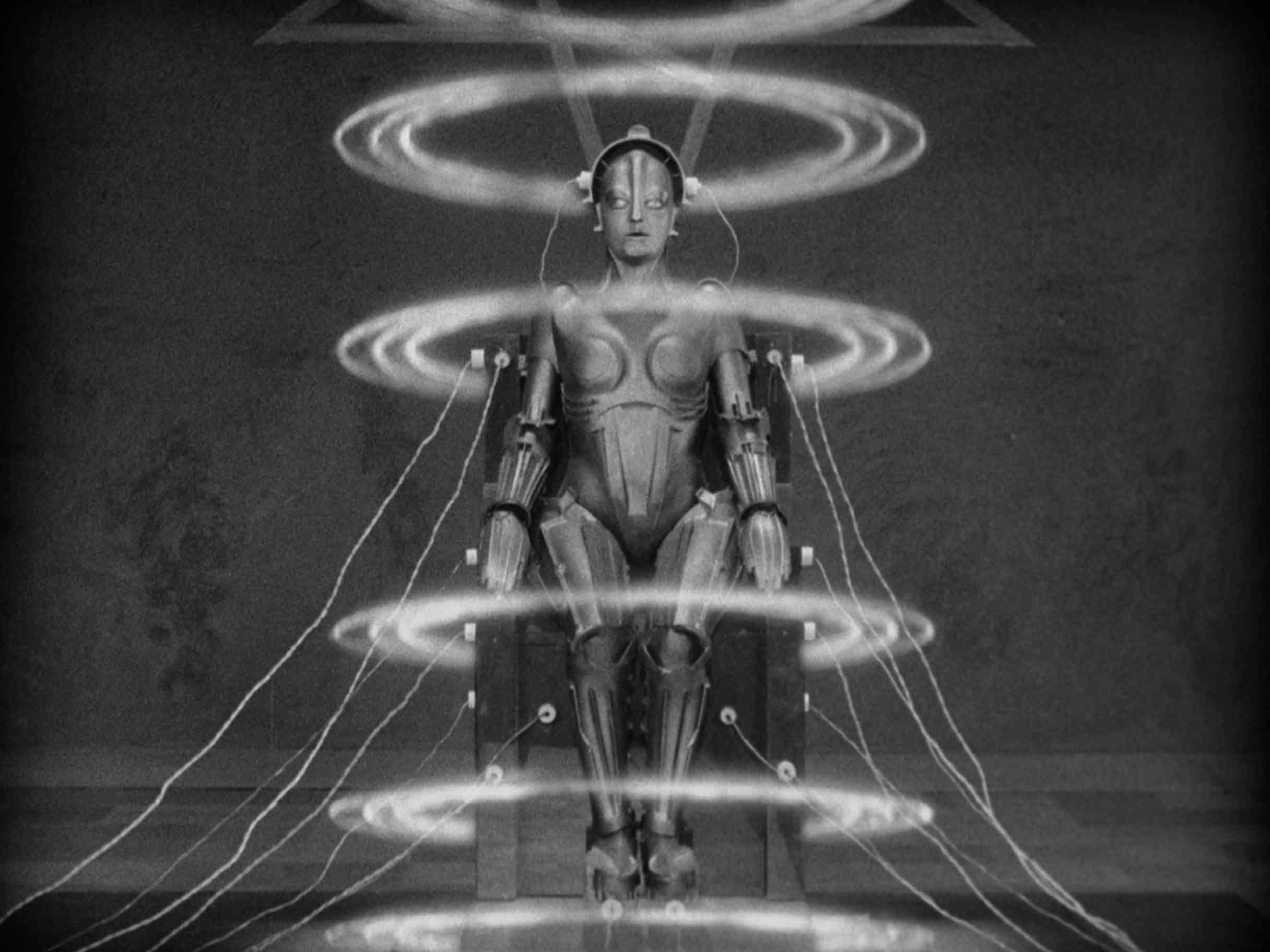
In subject matter, German filmmakers stressed fantasy and legend, and also an intense psychological realism not often attempted in American films. The Germans often treated themes in a style drawn from a movement in the arts called Expressionism (see Expressionism). Expressionist films used nonrealistic sets and unusual camera angles to represent a character’s inner feelings. The best-known and most influential Expressionist film was The Cabinet of Dr. Caligari (1919), directed by Robert Wiene.
One artistic approach in German cinema stressed lighting and camera movement. German filmmakers created a threatening visual mood to accompany their tales of the supernatural by making scenes darker than normal and by emphasizing contrasting light and shadow. A famous example is the horror movie Nosferatu (1922), directed by Friedrich Murnau. The same director also made The Last Laugh (1924), which told its story entirely through the visual images of the camera, eliminating descriptive and dialogue titles.
Filmmaking made advances in Russia, too, particularly after the Bolshevik (Communist) Revolution of 1917. In 1922, the Soviet Union was formed under Russia’s leadership, and it existed until 1991. In the Soviet Union, movies gained attention as an important medium for education and propaganda. Soviet filmmakers emphasized film editing, refining the montage. Montage is a technique in which many separate shots are used to create a scene’s meaning and tension.
Soviet director Sergei Eisenstein developed theories of how the arrangement of shots could create associations in the mind of the audience and stimulate emotions and ideas (see Eisenstein, Sergei Mikhailovich). Eisenstein put his ideas into practice in such important films as The Battleship Potemkin (1925), which raised the Soviet silent cinema to equal German films in artistic prestige and influence.
The silent film classics from Germany and the Soviet Union, as well as France, Scandinavia, and elsewhere, were not experienced as silent by audiences. In most large theaters, the films were accompanied by music, often prepared specifically for the film and played by a large orchestra.
American film companies showed their respect for European artistic advances by inviting many foreign filmmakers from Germany, Sweden, the United Kingdom, and elsewhere to work in Hollywood. Friedrich Murnau moved to Hollywood about 1926. Even more widely known were performers such as Sweden’s Greta Garbo, who became one of the greatest stars of American motion pictures.
The movies talk.
During the 1920’s, engineers in the United States and Germany were working to develop a technology that could add synchronous recorded sound to movies. By the mid-1920’s, a few systems were ready for demonstration.
The first sound film to create a sensation was The Jazz Singer (1927). Although silent for much of its length, in a few scenes the popular American entertainer Al Jolson sang and spoke in synchronous sound. The film used a system in which the sound from a mechanically recorded disc was mechanically synchronized with the film strip. This system was soon replaced by one that used electronic signals to record the sound directly on the film strip. The sound-on-film system was widely used by 1929. 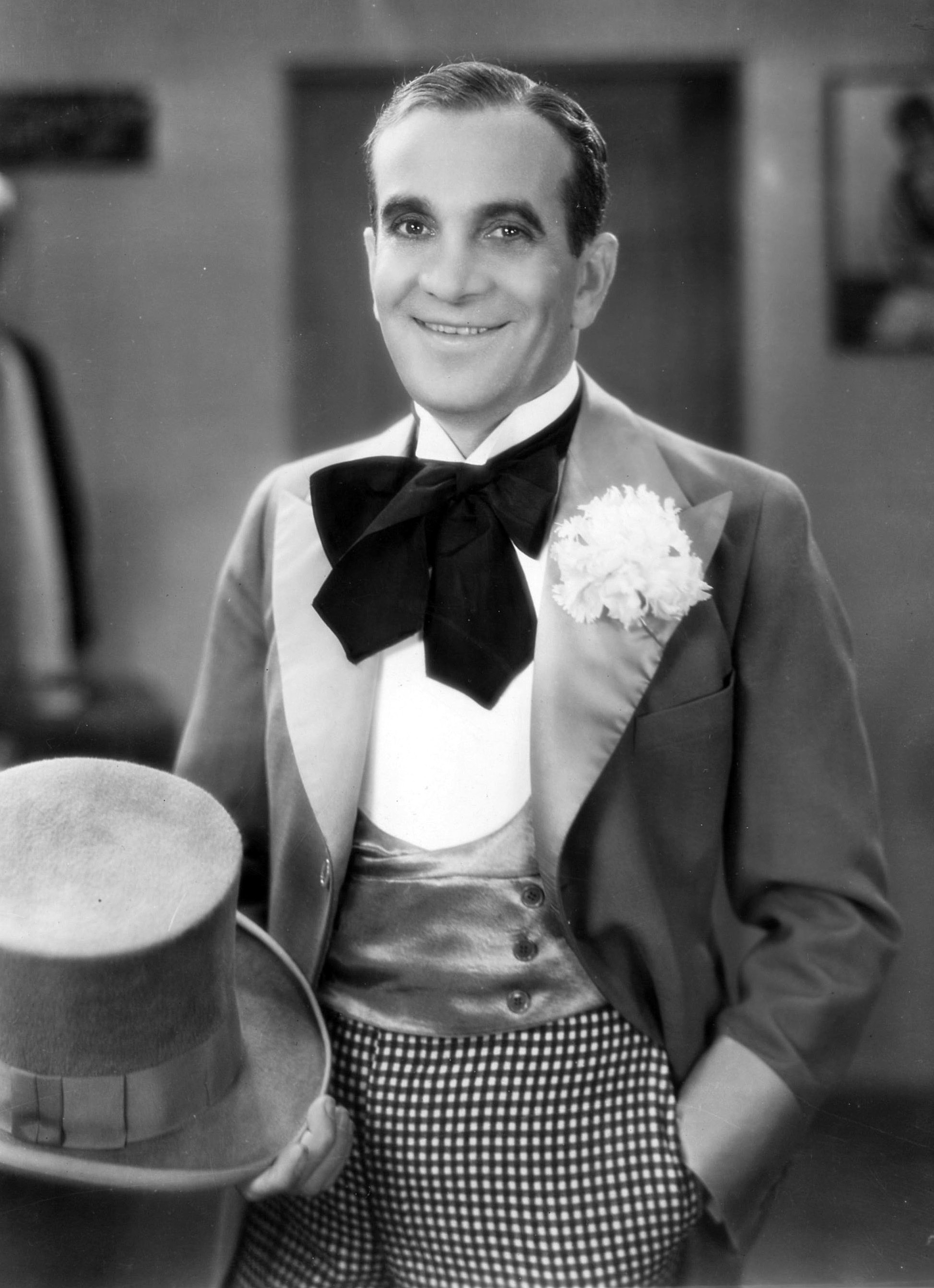
The coming of sound marked a turning point in motion-picture history. Some historians claim sound was actually a setback for the artistic development of movies. The emphasis on sound, and the expense of developing it, limited other technological advances that filmmakers had been experimenting with in the 1920’s. For instance, a wide-screen process demonstrated by French director Abel Gance in Napoleon (1927) was not generally introduced until the 1950’s. What was affected the most, perhaps, was a kind of poetic cinema represented by such silent films as The Passion of Joan of Arc (1928), directed by Carl Dreyer of Denmark. Such films survived more as an experimental art form than as part of mainstream commercial motion pictures.
With the introduction of sound, motion pictures went through an awkward period of adjustment. Cameras had to be enclosed in soundproof boxes because the microphones picked up motor noise. More importantly, directors had to learn how best to take advantage of sound. But this adjustment period was brief. By 1931, one of Germany’s major silent film directors, Fritz Lang, had made M, a sound film that remains a masterpiece of cinema. In 1928, Walt Disney issued Steamboat Willie, the first animated short film to use synchronized sound. For more information about animation in motion pictures, see Animation; Disney, Walt. 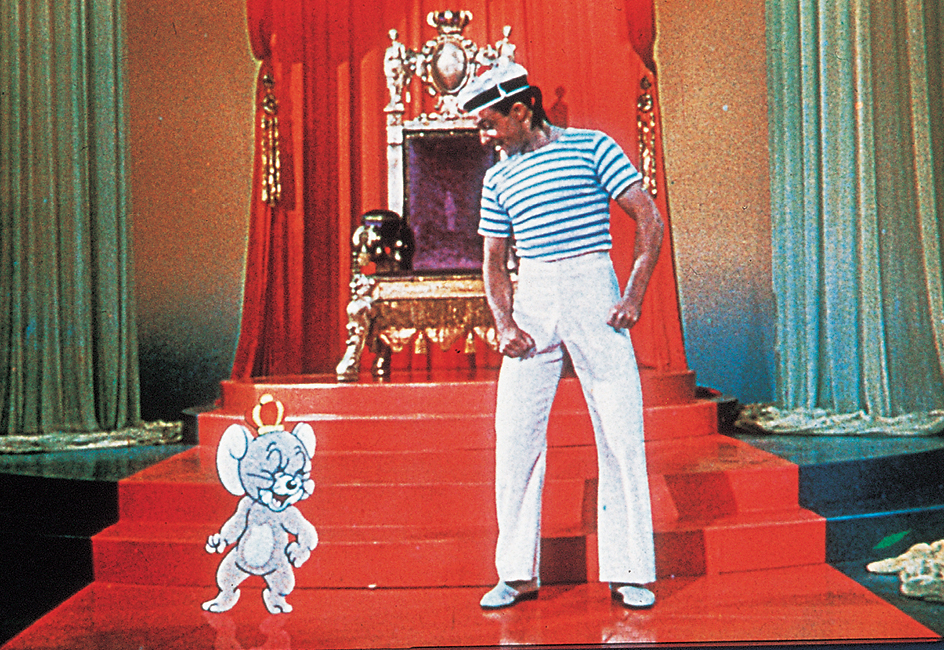
In Hollywood, sound introduced greater changes in personnel than in film style. Sound brought with it a flood of directors, dialogue writers, and, especially, performers from the Broadway theater. A number of silent screen stars, notably Greta Garbo and the comedy team of Stan Laurel and Oliver Hardy, successfully made the transition to sound. However, others did not, either because of unsuitable voices or problems with what the studios considered excessive salaries. 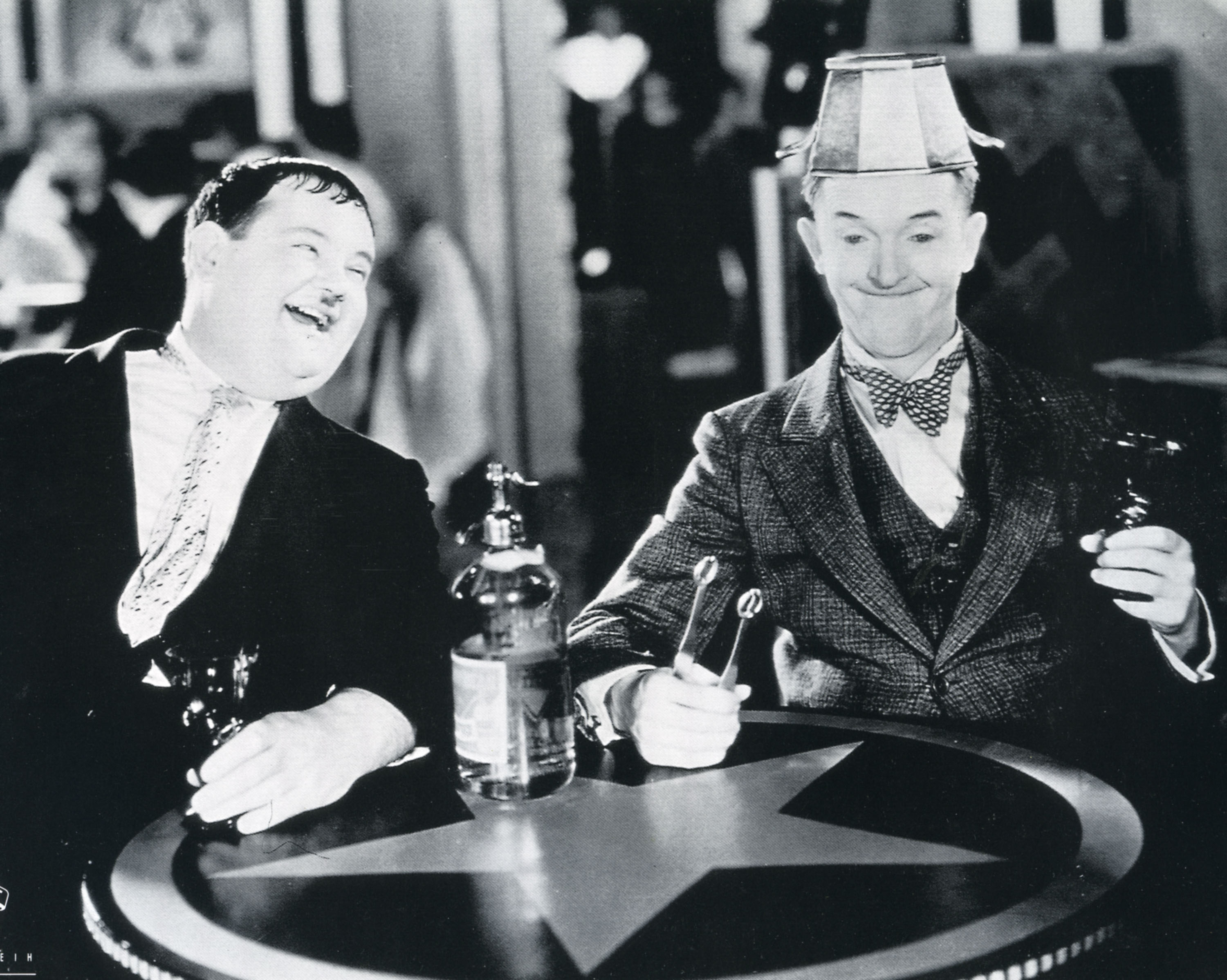
Movies in the 1930’s.
Two important new genres in American movies came from Broadway in the 1930’s, the musical and the gangster picture. Both came to symbolize Hollywood’s contribution to national culture during the Great Depression that followed the stock market crash of 1929. Gangster films dramatized the violence and disorder that accompanied the illegal manufacture and sale of alcoholic beverages during the Prohibition Era (1920-1933). Such films include The Public Enemy (1931), directed by William Wellman, and Scarface (1932), directed by Howard Hawks. Such musicals as Gold Diggers of 1933 (1933) portrayed a spirit of cooperation and optimism intended to combat the Great Depression. The film was one of many Hollywood musicals in the 1930’s that featured spectacular dance sequences created by Busby Berkeley. 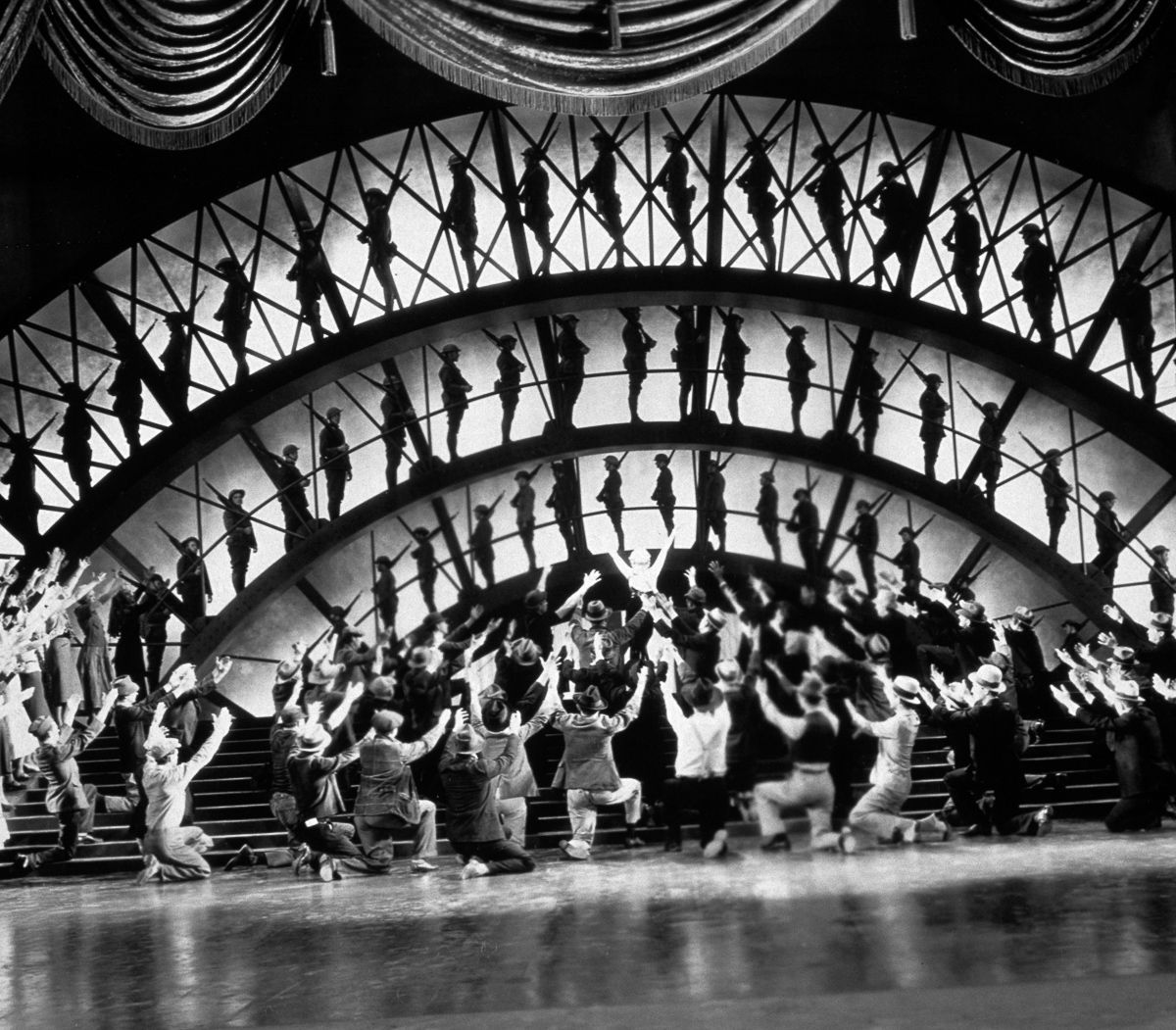
The Great Depression had a strong impact on the American film industry. Interest in sound pictures had nearly doubled annual movie theater attendance in the late 1920’s. But the economic crisis greatly reduced attendance, causing many theaters to close. Nearly all the movie companies lost money, and several declared bankruptcy. No major studios shut down, however.
By the mid-1930’s, American movie companies again began to prosper. They launched what many consider one of the greatest periods of popular entertainment filmmaking. During the middle and late 1930’s, Hollywood produced major hits in nearly all the familiar genres. In particular, the horror film gained new prominence, and the sound comedy emerged as a leading film style. The horror cycle began in 1931 with Dracula, directed by Tod Browning, and Frankenstein, directed by James Whale.
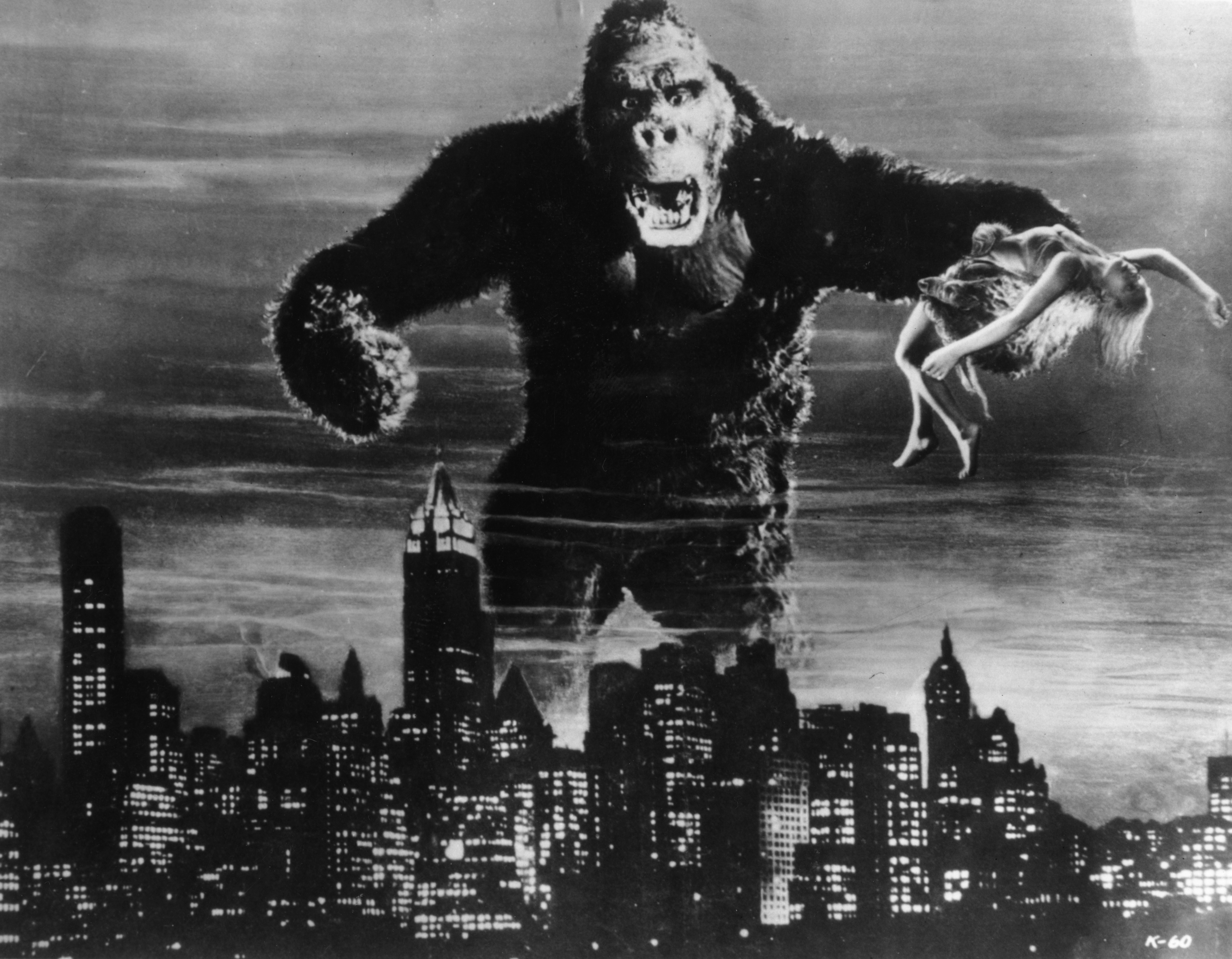
Among the comedy films of the 1930’s, one of the most popular types was the screwball comedy. These movies often portrayed the zany antics of wealthy characters. One classic screwball comedy was It Happened One Night (1934), directed by Frank Capra and starring Clark Gable and Claudette Colbert. Another example was Bringing Up Baby (1938), directed by Howard Hawks and starring Cary Grant and Katharine Hepburn.
The arrival of sound gave new emphasis to the role of language in cinema. Many countries strengthened their film industries out of national pride in their language and culture. Some countries restricted the importation of American movies, in order to encourage their domestic film industry. In many countries, the dialogue of foreign films was translated into the home language. In the United States, however, such films were almost always played in their original version. Foreign films featured printed English subtitles projected on the bottom of the film.
The leading film-producing nations of Europe during the silent era were Germany and the Soviet Union. These countries were displaced during the first decade of sound movies by the United Kingdom and France. Alfred Hitchcock led the emergence of British cinema. Hitchcock directed a number of internationally successful thrillers, including The Thirty-Nine Steps (1935) and The Lady Vanishes (1938). In France, Jean Renoir made a series of films during the 1930’s that shrewdly observed social attitudes of the time, notably Grand Illusion (1937) and Rules of the Game (1939).
The rise of dictatorships in Germany and the Soviet Union hampered filmmaking in those countries in the 1930’s. After Adolf Hitler came to power in Germany in 1933, a number of German filmmakers went into exile. Fritz Lang began an important career as an American film director with Fury (1936). Renoir went to Hollywood after the German conquest of France early in World War II (1939-1945). Hitchcock had already left the United Kingdom for Hollywood in 1939, though not for political reasons. One German filmmaker who remained in Germany was Leni Riefenstahl. She made two powerful, controversial propaganda films, Triumph of the Will (1935), glorifying the Nazi Party, and Olympia (1938), about the 1936 Olympic Games in Berlin. 
The United States did not enter the war until late 1941. Hollywood’s prewar period closed triumphantly with two celebrated films. One was Gone with the Wind (1939), an American Civil War drama directed by Victor Fleming and starring Clark Gable and Vivien Leigh. The other was Citizen Kane (1941). A young American director and actor named Orson Welles produced, directed, and starred in this story of a powerful American newspaper publisher. Welles and his cinematographer, Gregg Toland, experimented with startling camera angles and dramatic lighting. The film’s brilliant photography helped make it one of the most honored films in cinema history. 
Movies and World War II.
The role of movies in education and propaganda was far more appreciated during World War II than in World War I. Hollywood contributed to the war effort through traditional entertainment movies and through government service. Fiction films, such as Casablanca (1942), dramatized the war struggle using the traditional screen narrative devices of a love story and individual heroism. Casablanca was directed by Michael Curtiz and starred Humphrey Bogart and Ingrid Bergman. It became one of the most popular motion pictures in American film history. 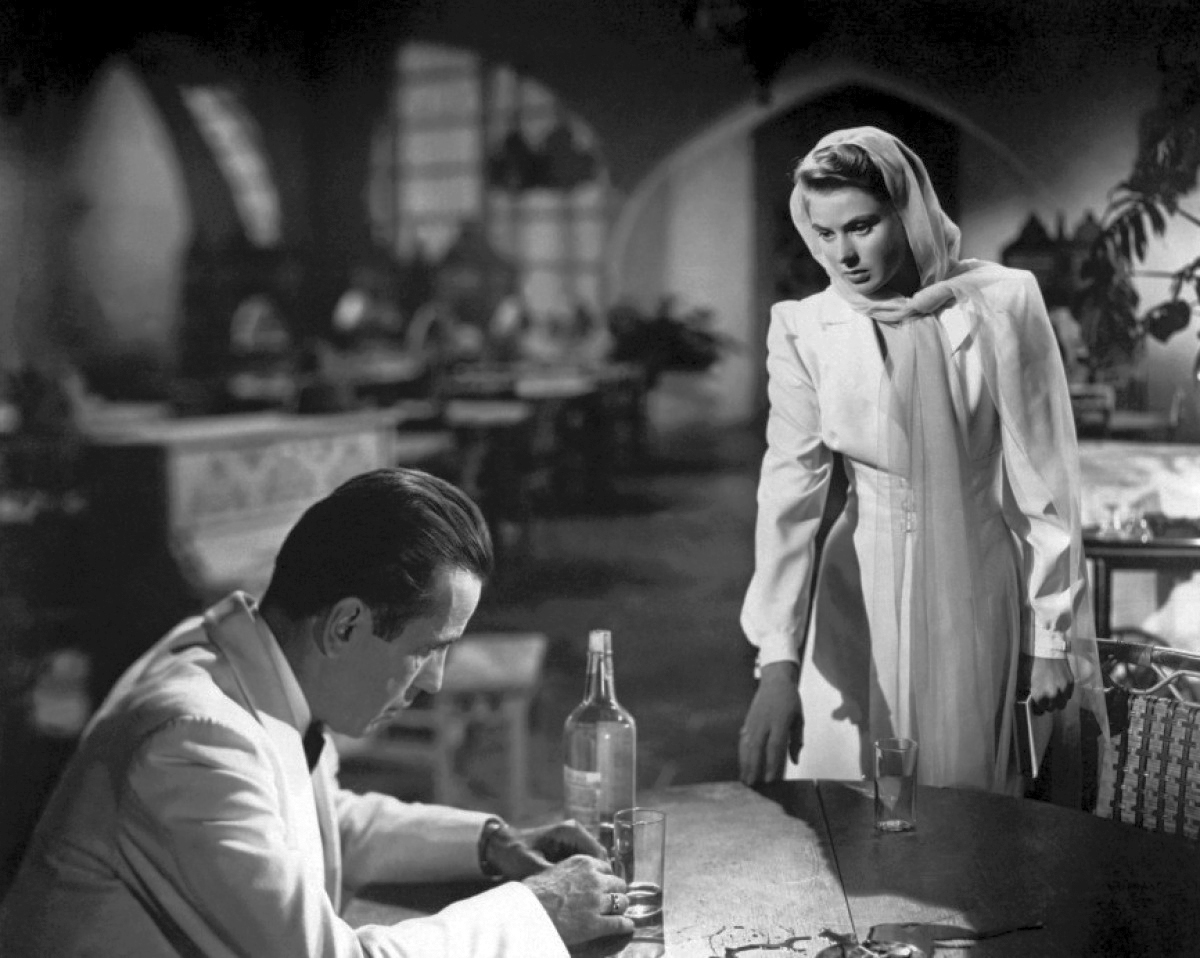
A number of American directors entered military service and made important documentary films about the war. These directors included John Ford, William Wyler, John Huston, and George Stevens. Working for the U.S. Army Signal Corps, the American director Frank Capra supervised the documentary series “Why We Fight.”
Postwar Realism.
The impact of the war led many European directors to make movies that focused on society and its problems. This impulse resulted in the emergence of the first important postwar European film movement, Neorealism. Neorealist directors were concerned primarily with portraying the daily life of ordinary people. They mainly filmed on location rather than on a studio set, and they used mostly nonprofessional actors. These qualities gave Neorealist films a gritty, almost documentary look.
Italian director Roberto Rossellini made the first internationally significant Neorealist films. Rossellini’s Open City (1945) and Paisan (1946) told of the struggle to liberate wartime Italy from its own Fascist government and the later German occupation of the country. Probably the most famous of the Neorealist films was The Bicycle Thief (1948), directed by Vittorio de Sica. It follows a workingman and his young son as they search for a stolen bicycle. The Italian government regarded the treatment of social problems in these films as harmful to the country’s image internationally. Italy passed a law in 1949 hampering the export of these types of films. The law effectively ended the Neorealism movement in Italy.
Thanks to the international impact of Neorealism, films and filmmakers previously little known outside their home countries began to gain international recognition. Some of this acclaim resulted from screenings at film festivals. Japanese director Akira Kurosawa brought attention to his country’s distinguished film tradition with Rashomon (1950). The Latin American film industry gained recognition with Los Olvidados (1950), made in Mexico by Spanish director Luis Buñuel.
Postwar American movies.
Like European filmmakers, some American directors entered the postwar era with a desire to make films that were socially relevant. But political, legal, and economic influences led Hollywood to fall back on familiar genres. The conservative political atmosphere of the postwar years discouraged filmmakers from taking risks in subject matter. In 1948, the Supreme Court of the United States effectively banned vertical integration by requiring studios to rid themselves of their theaters. Thus, studio control of movie exhibitions was eliminated. The studio system suffered from that court ruling and declining film attendance in the early 1950’s due to the increasing popularity of television. Studios never regained the power they once had.
Year after year during the 1950’s, movie attendance steadily decreased. There was a brief upswing in 1953 and 1954 when the industry introduced wide-screen processes, such as CinemaScope and Cinerama. These processes temporarily lured the curious away from their television sets. Still, Hollywood’s production volume fell from about 550 films per year before World War II to about 250 a year during the 1950’s. Independent production began to take over from the studio system, though studios still functioned as distributors. International co-productions became common, mingling stars from many countries.
Films in the postwar United Kingdom.
British cinema became more realistic in the 1950’s, a decade that also saw the making of some of the most popular British film comedies. Many of these comedies were sophisticated satires made at the Ealing Studios and became known as “Ealing comedies.” They included Kind Hearts and Coronets (1949), The Lavender Hill Mob (1951), and The Ladykillers (1955).
In the late 1940’s, British cinema became noted for the work of such directors as David Lean and Carol Reed. Lean directed one of the greatest British postwar films, the romantic drama Brief Encounter (1945). He also directed acclaimed screen versions of the English author Charles Dickens’s novels, such as Oliver Twist (1948). Reed became known for several moody dramas, notably Odd Man Out (1947) and The Third Man (1949). The actor Lawrence Olivier directed and starred in films of the famous English playwright William Shakespeare’s Henry V (1944), Hamlet (1948), and Richard III (1955).
Beginning in 1959, British filmmaking was revolutionized by a series of films that realistically examined working-class life. The film that started the trend was Room at the Top (1959), directed by Jack Clayton. Important films that followed included Saturday Night and Sunday Morning (1960), directed by Karel Reisz; and The Loneliness of the Long Distance Runner (1962), directed by Tony Richardson.
Although the British film industry became increasingly dependent on American financing, it continued to produce some notable films. They include Lawrence of Arabia (1962) and A Passage to India (1984), both directed by David Lean; Tom Jones (1963), directed by Tony Richardson; A Kind of Loving (1962) and Darling (1965), both directed by John Schlesinger; This Sporting Life (1963), If (1968), and Oh, Lucky Man (1973), all directed by Lindsay Anderson; A Hard Day’s Night (1964), directed by Richard Lester; Chariots of Fire (1981) directed by Hugh Hudson; Gandhi (1982), directed by Sir Richard Attenborough; and The Mission (1986), directed by Roland Joffe. 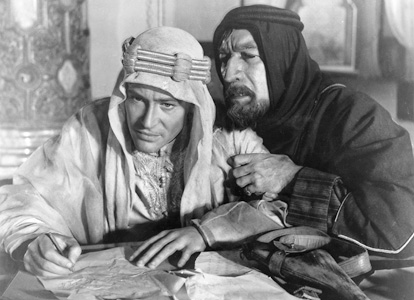
Films in postwar Australia.
Purely Australian filmmaking collapsed after World War II. The few films made in Australia between 1945 and 1970, such as The Overlanders (1947), On The Beach (1959), and Wake in Fright (1969), were made by overseas companies with foreign directors.
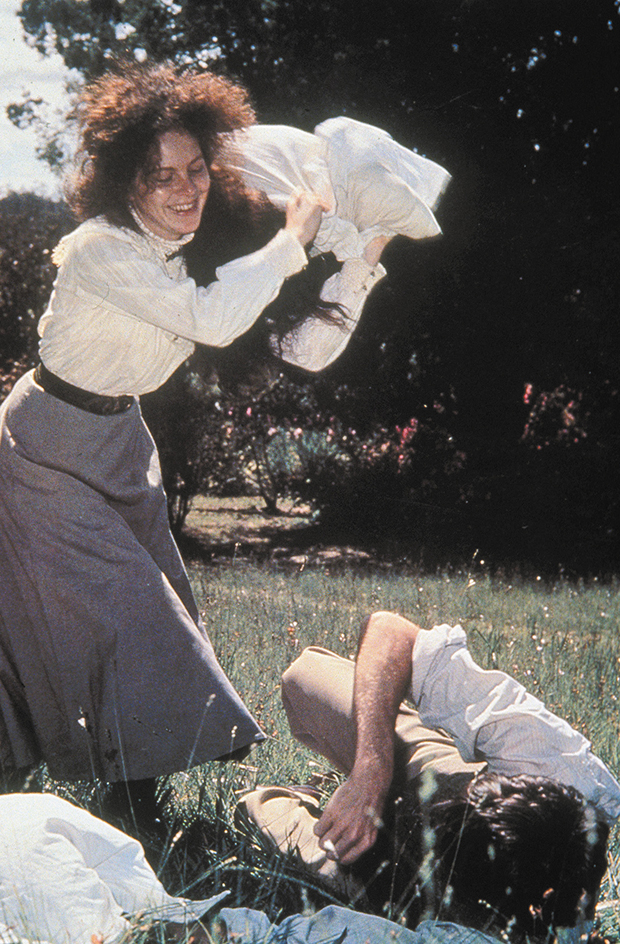
In 1970, the federal government established the Australian Film Commission to encourage and help develop local film production. The South Australian government set up the South Australian Film Corporation, a precedent that was later followed by most other Australian states. The South Australian Film Corporation was responsible for some of the most outstanding films of the following years. They included Sunday Too Far Away (1974), Picnic at Hanging Rock (1975), Storm Boy (1977), Breaker Morant (1979), and Gallipoli (1981). The Australian directors Peter Weir and Bruce Beresford won worldwide reputations in this period, as did Gillian Armstrong with her film My Brilliant Career (1981).
Films in postwar Japan.
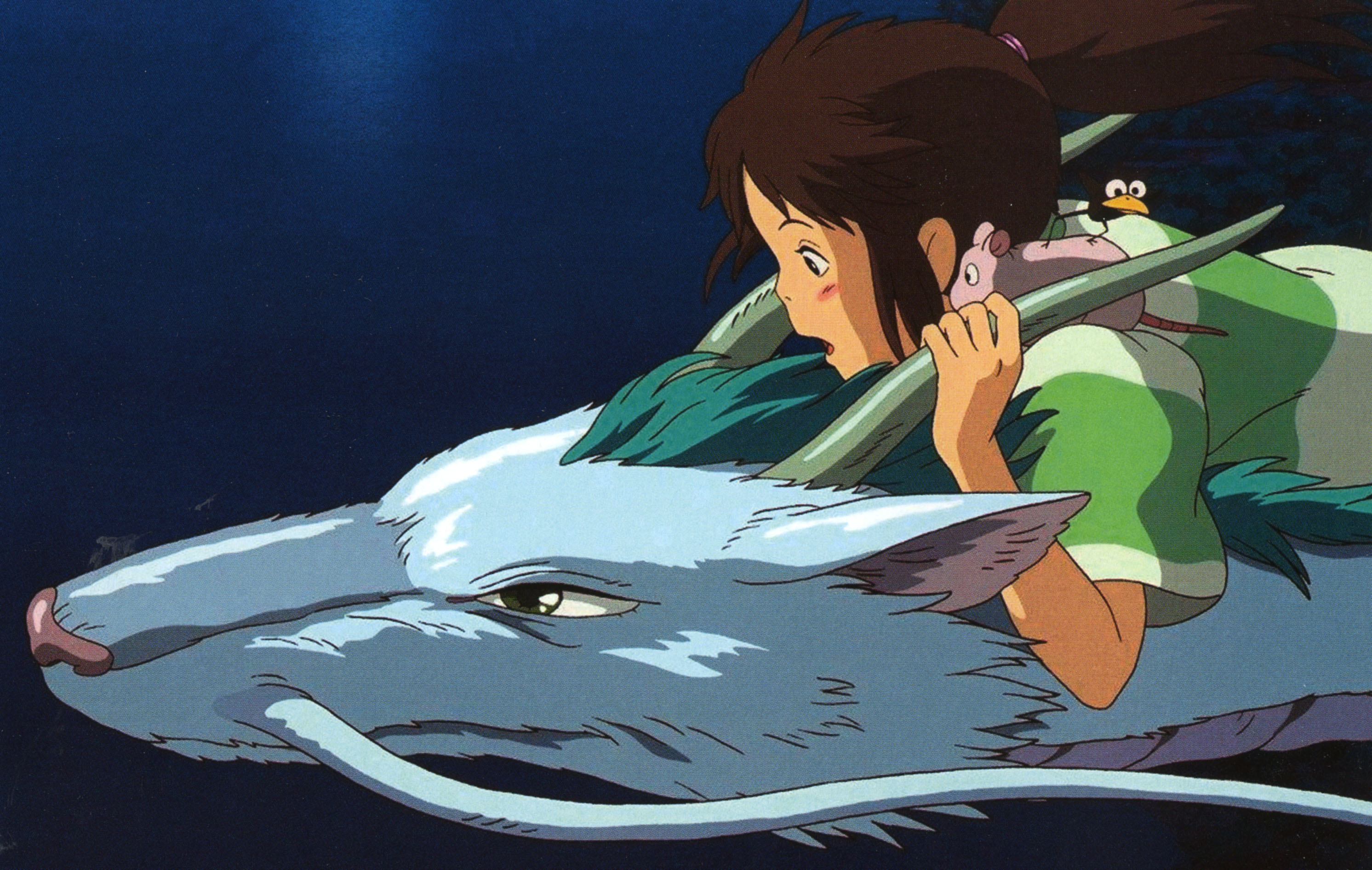
Films in postwar India.
The film industry of India is probably the largest in the world in terms of the number of films produced each year. The industry achieved international attention through the work of director Satyajit Ray. He became particularly noted for a series of three motion pictures describing the growth of a boy to manhood in modern India. The series, known as the Apu trilogy, consists of Pather Panchali (Song of the Road, 1955), Aparajito (The Unvanquished, 1956), and The World of Apu (1959). Other Indian filmmakers include Mrinal Sea, Shyam Benegal, Girish Karnad, and Buddhadeb Dasgupta. 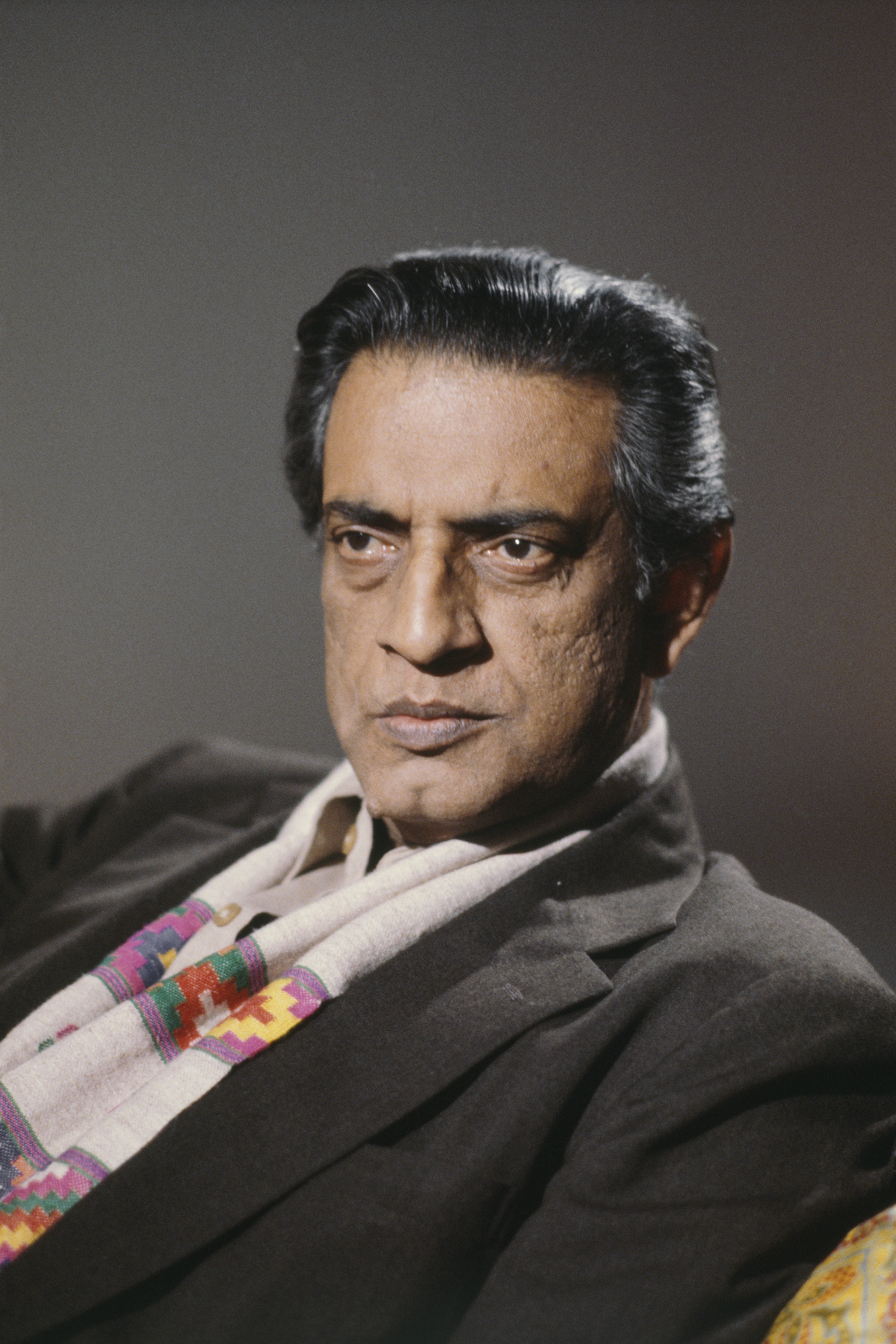
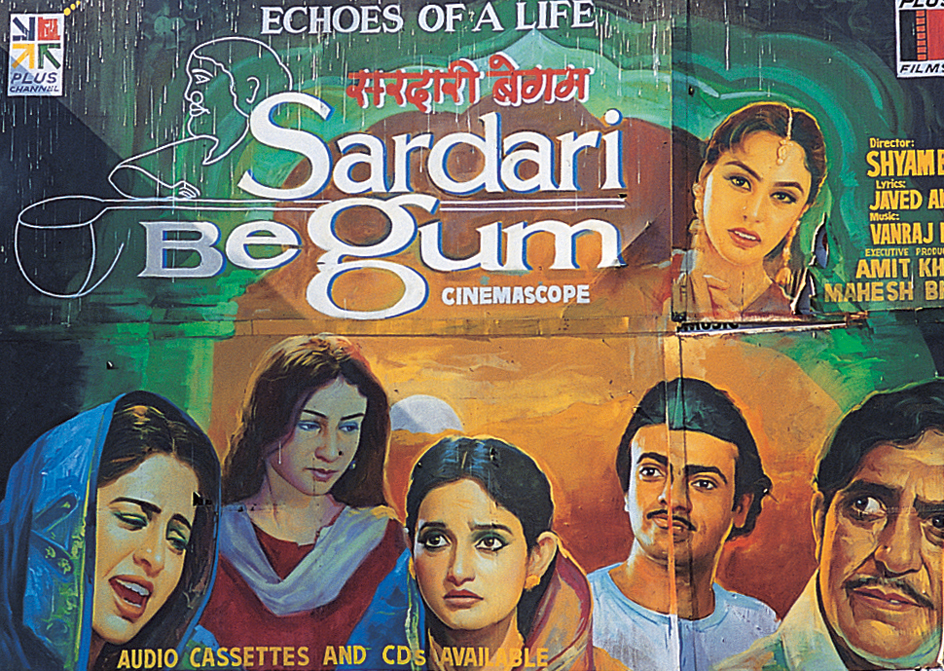
The most popular part of the Indian film industry is called “Bollywood.” The term comes from combining Bombay (now Mumbai) with Hollywood. Bollywood films are made in the Hindi language. Most of them are musicals, featuring both singing and dancing. The plots emphasize romance, comedy, and melodrama. The dancing is typically based on traditional Indian classical dance, historical dances, and folk dances. The songs are prerecorded by professional “playback” singers. The actors “lip sync” the songs on the screen.
The art film revival.
The reduction in Hollywood film production created renewed interest in art films, much as in the 1920’s. During the 1950’s, a number of theaters in the United States specialized in showing films by foreign directors. Serious filmgoers sought out works by such directors as Federico Fellini of Italy and Ingmar Bergman of Sweden. Fellini became known for such highly personal comedy-dramas as La Strada (1954) and Nights of Cabiria (1957). Bergman won fame for such brooding and symbolic dramas as The Seventh Seal and Wild Strawberries (both 1957). Such motion pictures reminded American moviegoers of the possibilities of film art—at a time when many people saw Hollywood as a place dominated by gimmicks and old, overworked formulas.
The New Wave in France.
One place where the Hollywood movie remained appreciated was France. There, young film critics praised John Ford, Howard Hawks, and certain other studio directors for bringing a unique visual style and personal viewpoint to standard genre films. Under the influence of critical writings from France, the artistic qualities of Hollywood films began to be appreciated more than ever before. 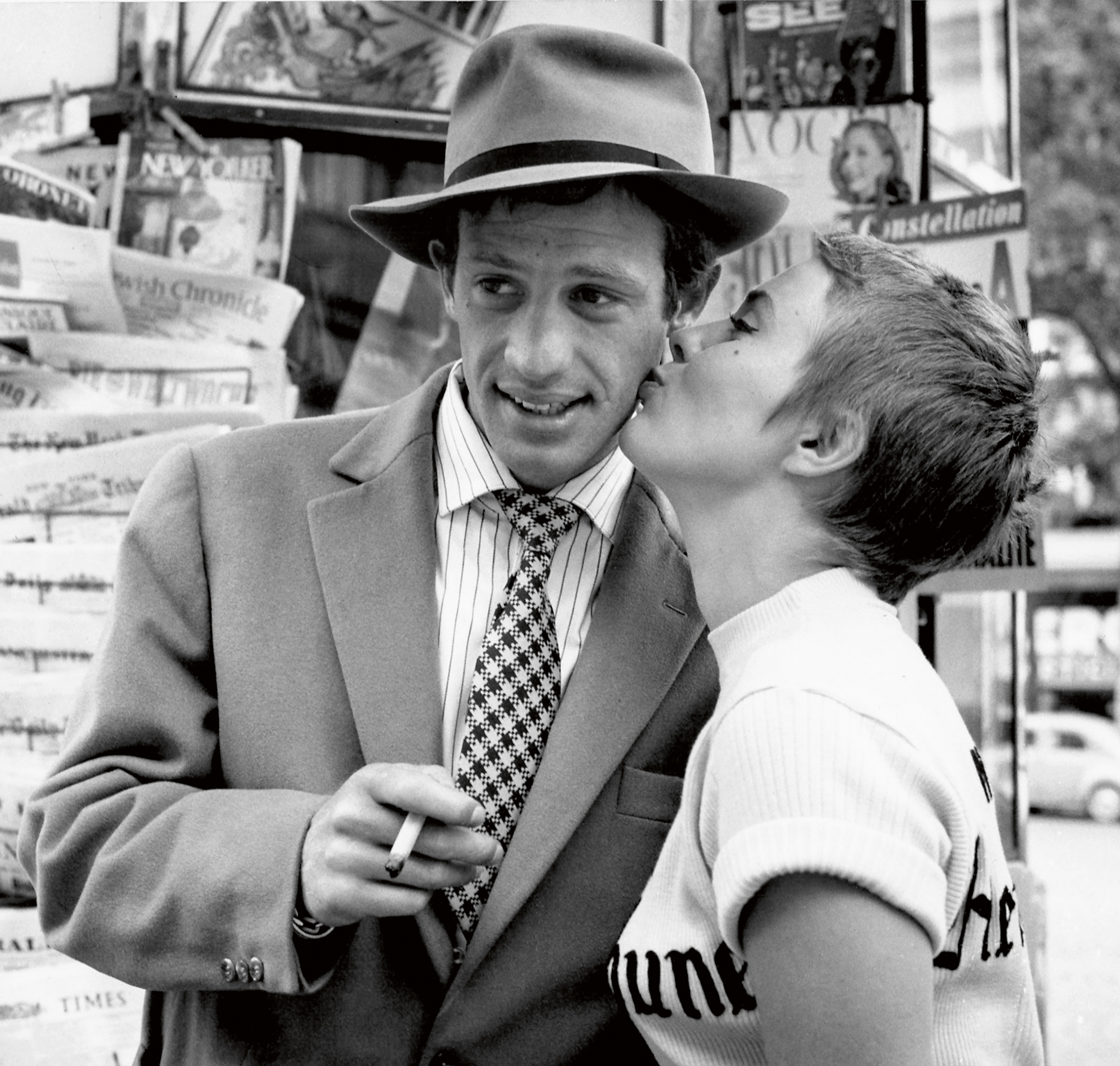
The chief goal of the young French critics, however, was to revive what they saw as a stuffy French film industry. Leaving writing for directing, they were to become leaders of the French New Wave. Their impact on filmmaking of the 1960’s was as profound as that of Italian Neorealism several years earlier. Such films as The 400 Blows (1959), directed by François Truffaut, and Breathless (1960), directed by Jean-Luc Godard, marked the emergence of a new generation of influential movie directors.
Claude Chabrol is credited with starting the New Wave with Le Beau Serge (1958). Louis Malle gained recognition as an important New Wave director with The Lovers (1958). Other major directors who emerged from the New Wave included Jacques Rivette and Eric Rohmer.
The years 1959 and 1960 proved to be a key moment in cinema development. Besides the works of Truffaut and Godard, a number of other films showed that a widespread artistic revival was underway. These films included Hiroshima, Mon Amour (1959), a French film directed by Alain Resnais; Fellini’s La Dolce Vita (1960); and Alfred Hitchcock’s Psycho (1960).
Movies in the 1960’s.
The decade of the 1960’s saw the appearance of Cinema Novo in Brazil, a movement that resembled Neorealism. It attempted to combine political subject matter with bold cinema techniques. Such directors as Nagisa Oshima in Japan and Bernardo Bertolucci in Italy became part of the international film scene. Stanley Kubrick, an American director working in England, made a number of popular and influential films. The best known was Dr. Strangelove or: How I Learned to Stop Worrying and Love the Bomb (1964). The film is a dark comedy that satirizes the serious subjects of conflict between the United States and the Soviet Union and the threat of nuclear destruction. Kubrick also directed 2001: A Space Odyssey (1968), a science-fiction work about future space travel and humanity’s self-renewal. 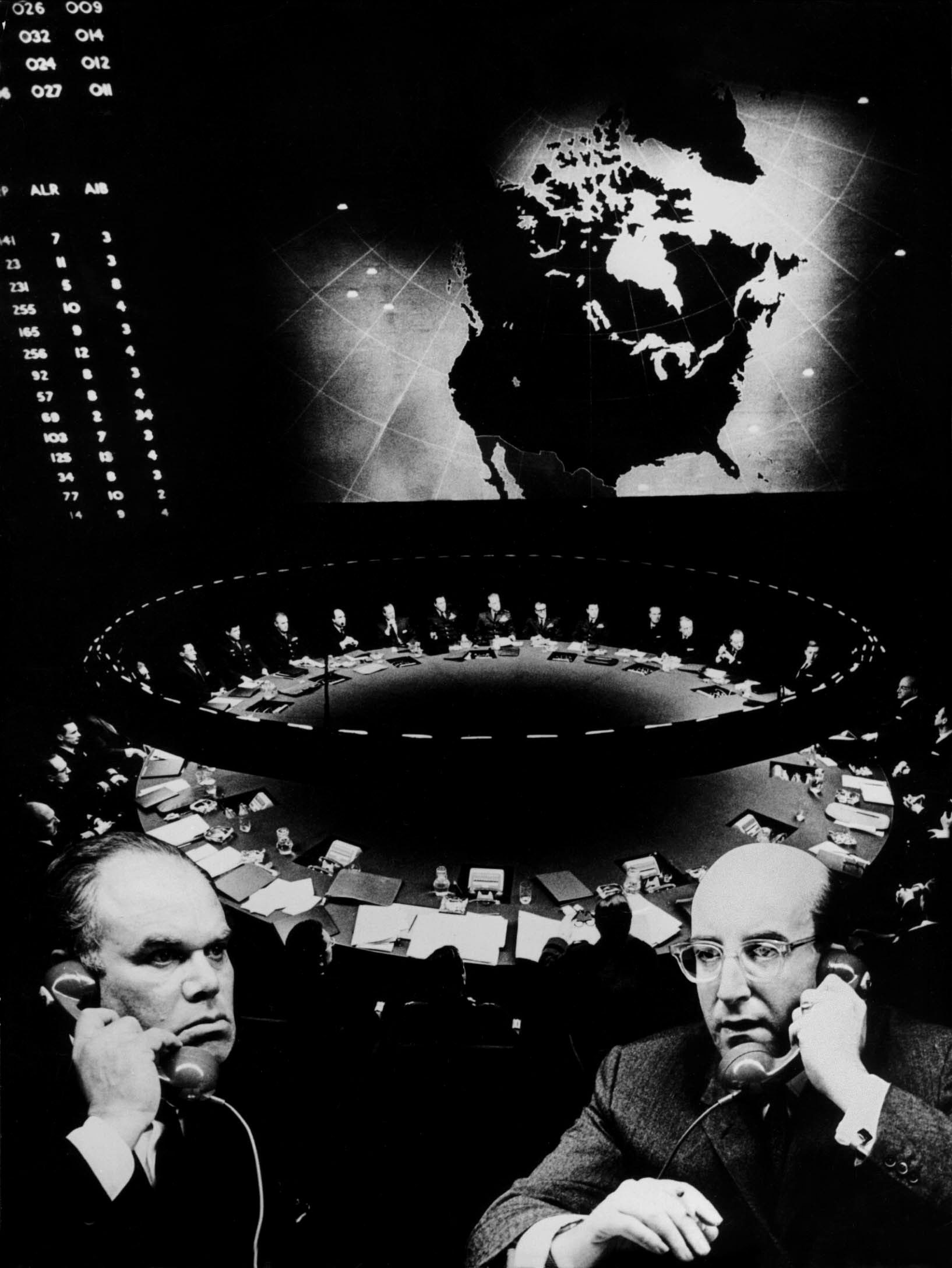
During the 1960’s, Eastern European films made their mark on the world scene for the first time. Polish director Roman Polanski’s Knife in the Water (1962) was the first major international success from Eastern Europe. Czechoslovak cinema soon captured worldwide attention with a series of comic films that criticized social and political conditions. The best known include Loves of a Blonde (1965) and The Firemen’s Ball (1967), directed by Milos Forman; and Closely Watched Trains (1966), directed by Jiri Menzel. These movies were popular with audiences but not with government officials. The movement ended when Soviet troops invaded Czechoslovakia in 1968.
Several Eastern European filmmakers, including Polanski and Forman, emigrated to Hollywood, where they could pursue their craft with greater artistic freedom. Forman won the 1975 Academy Award as best director for One Flew Over the Cuckoo’s Nest. 
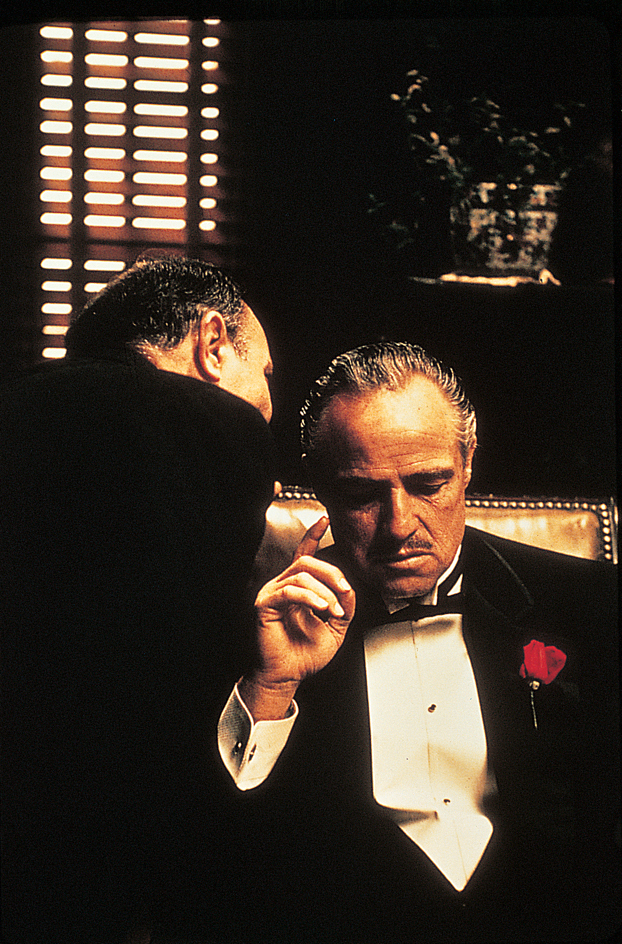
For several reasons, the American film industry did not fully participate in the world cinema renaissance of the 1960’s. Theater attendance continued to suffer in the United States from the availability on television of both old and more recent films, as well as made-for-TV movies. Traditional methods and higher production costs slowed the Hollywood studios’ response to new trends and younger talents. Only in the late 1960’s did opportunities open up for a new generation of filmmakers. Their impact began to be felt in the 1970’s, stimulated by new ways in which motion pictures were marketed to the public.
Changes in Hollywood.
For many years, movies were released slowly, first in a few big cities, then fanning out across the country to smaller cities and towns. In the early 1970’s, the movie companies discovered that they might gain greater financial returns by releasing a film in hundreds of cities at the same time, supported by national television advertising.
The new distribution method was used experimentally on director Francis Ford Coppola’s The Godfather (1972), a much-anticipated film based on a best-selling novel about organized crime. The results were impressive. The Godfather became the most commercially successful film produced to that time—dethroning Gone with the Wind, which had reigned as box-office champion for more than 30 years. In addition, Coppola was the first of Hollywood’s younger directors to make a major impact. His success helped open the door for other young filmmakers.
A new generation of filmmakers
surfaced in the 1970’s. Steven Spielberg and George Lucas became the most successful of these filmmakers. They established a remarkable record for producing and directing popular films, beginning with Spielberg’s Jaws (1975). Lucas’s science-fiction movie Star Wars (1977) was the first of many popular adventure, military, and science-fiction movies to come from Hollywood in the late 1900’s. 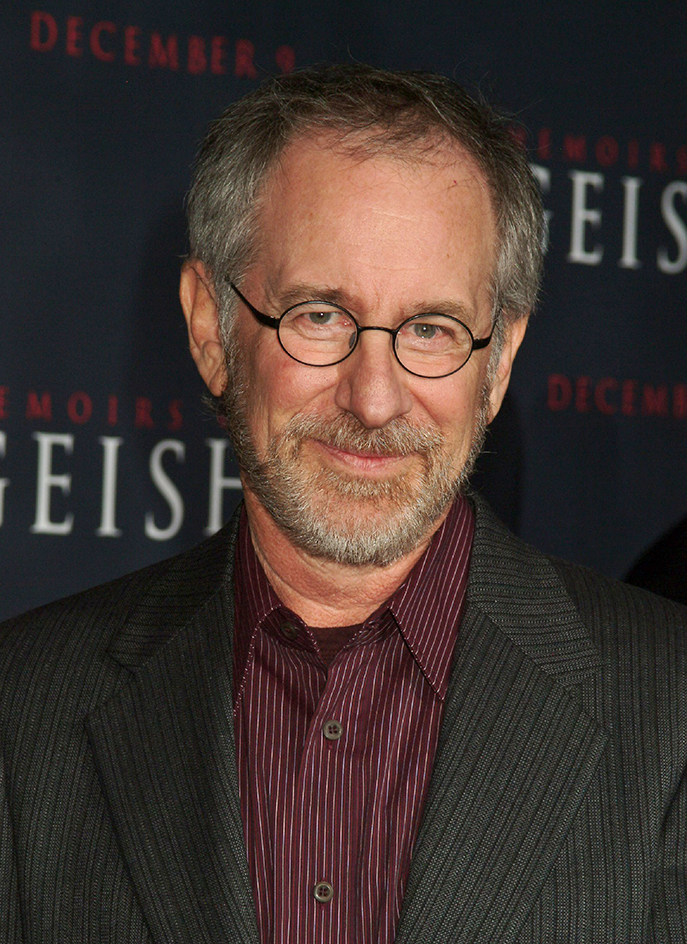
Spielberg and Lucas succeeded by creating old-fashioned genre movies modernized with spectacular visual effects. Lucas created five more films in the “Star Wars” series. Spielberg and Lucas teamed up to make four films that re-created the daredevil adventures of action movies of the 1930’s and 1940’s. Lucas produced and Spielberg directed the adventure movies Raiders of the Lost Ark (1981), Indiana Jones and the Temple of Doom (1984), Indiana Jones and the Last Crusade (1989), and Indiana Jones and the Kingdom of the Crystal Skull (2008). As co-producer and director, Spielberg made one of the most commercially successful films in history, E.T.: The Extra-Terrestrial (1982). He also directed such critical successes as Schindler’s List (1993) and Saving Private Ryan (1998).
The gap grew wider between Hollywood’s emphasis on blockbuster hits and the more modest resources and goals of moviemakers from other countries. From Asia, Africa, the Middle East, Australia, and elsewhere, came films whose visions of history, culture, and social relations were little known to audiences in other countries. Examples include Armstrong’s My Brilliant Career from Australia and The Official Story (1985), directed by Luis Puenzo from Argentina.
The success of films encouraged some American moviemakers to work outside the big-budget, commercially oriented Hollywood film industry. Perhaps the most important non-Hollywood director was Woody Allen. He aimed his comedies at adult, urban moviegoers. Allen achieved considerable success with such films as Annie Hall (1977) and Hannah and Her Sisters (1986). Spike Lee became a leading black voice in American cinema with School Daze (1988), Do the Right Thing (1989), Jungle Fever (1991), and Malcolm X (1992). Other important independent directors included the brothers Ethan and Joel Coen, who directed Fargo (1996); John Sayles, director of Lone Star (1996); and Quentin Tarantino, who created Pulp Fiction (1994).
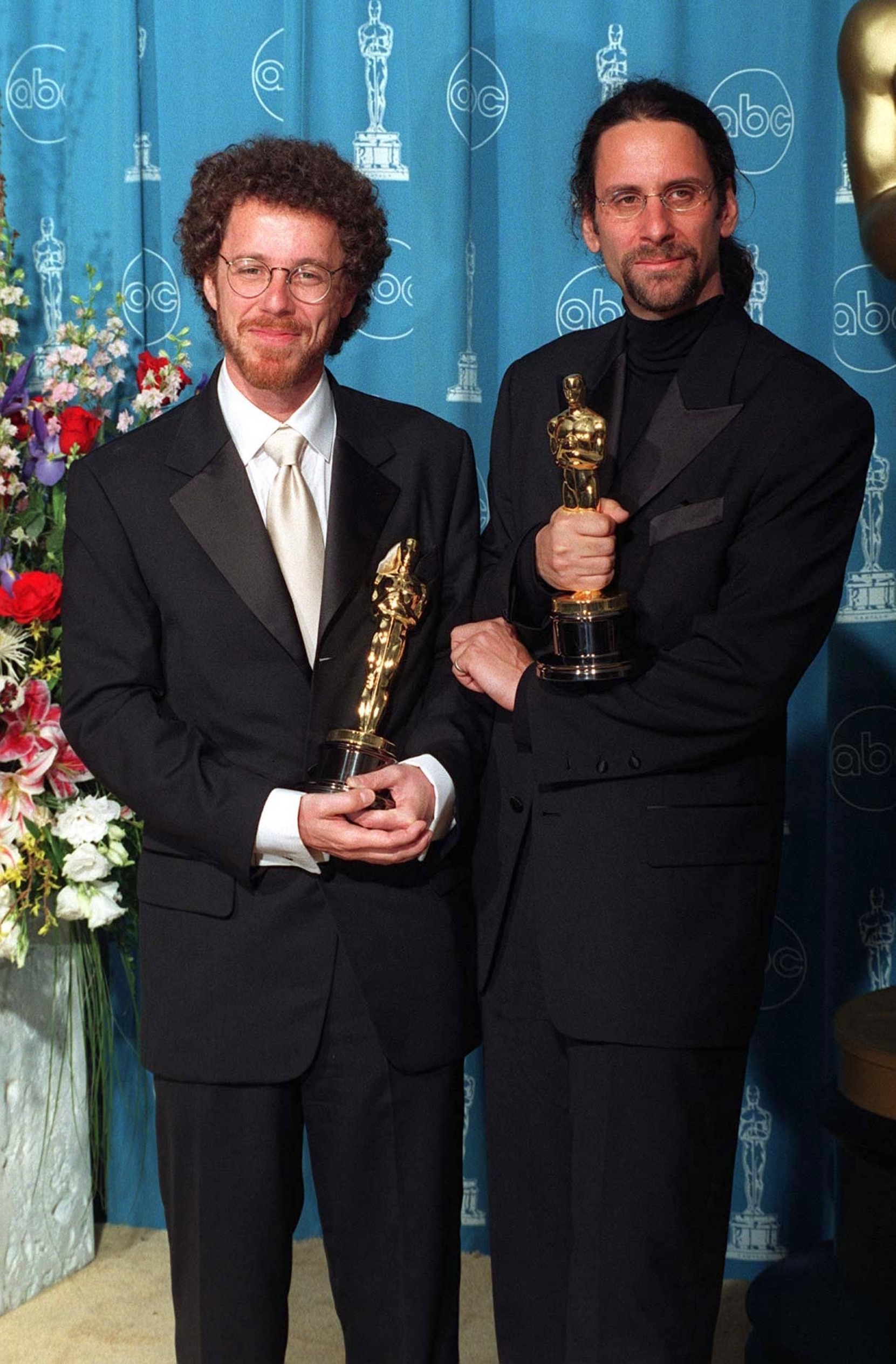
During the 1980’s and 1990’s, new means of distribution helped foster filmmaking throughout the world. Cable television, videocassettes, and DVD’s resulted in an increased variety of national and cultural viewpoints in film. At the same time, Hollywood continued to exert its powerful attraction on both foreign and American independent moviemakers for its financial resources and access to a vast audience.
The computer revolution.
Hollywood introduced special effects images created by computer graphics in the 1980’s with such films as TRON (1982), The Young Sherlock Holmes (1985), and The Abyss (1989). In 1993, Steven Spielberg’s breakthrough Jurassic Park made dinosaurs come to life in present-day settings. This movie convinced Hollywood of the potential of computer graphics in creating greater realism and even more elaborate fantasy films. It jump-started the use of computer-generated special effects in movies. In 1995, Pixar Animation Studios released the smash hit Toy Story, the first fully computer-animated feature film. Toy Story helped launch a new industry of computer-animated feature films, which later included Shrek (2001), Ice Age (2002), Frozen (2013), and Minions (2015). 
Also in the 1990’s, Independence Day (1996) used computer special effects to portray an alien attack on Earth. Men in Black (1997) was a popular science-fiction comedy about special agents hunting alien creatures from other worlds. Such films sometimes were criticized for allowing special effects to replace such story elements as characterization and plot. Computer special effects contributed to the worldwide box-office success of Titanic (1997), which portrayed the famous 1912 sinking of a luxury ship. The Matrix (1999) further developed computer special effects.
In 2004, The Aviator used a technique called computer-generated imagery (CGI) to re-create the look of films from the 1930’s. CGI is the use of computers to create believable, but entirely digital, characters and sets. Nearly every major motion picture made in the 2000’s used CGI to create at least some images.
Motion pictures today.
Although Hollywood has maintained its domination of the international marketplace, filmmaking throughout the world flourishes as never before. Along with the established film industries of Europe and such countries as India and Japan, new film cultures have emerged. Filmmakers in such countries as China and Iran have gained recognition through festivals, art house screenings, and video and digital distribution.
Asian martial arts films had been popular with specialized audiences for decades. These films entered the mainstream with the success of such works as Crouching Tiger, Hidden Dragon (2000), a United States-Taiwan co-production directed by Ang Lee of Taiwan. CGI enhanced the spectacular special effects in Chinese director Zhang Yimou’s Hero (2002) and House of Flying Daggers (2004).

In the 2000’s, several fantasy movies became huge international hits. They included the “Lord of the Rings” trilogy (2001-2003), the “Harry Potter” series (2001-2011), the “Hunger Games” series (2012-2015), and the “Pirates of the Caribbean” series (2003-2017). The special effects science-fiction blockbuster Avatar (2009) was one of the most commercially successful films in history. It was released in both traditional 2-D and 3-D formats.
